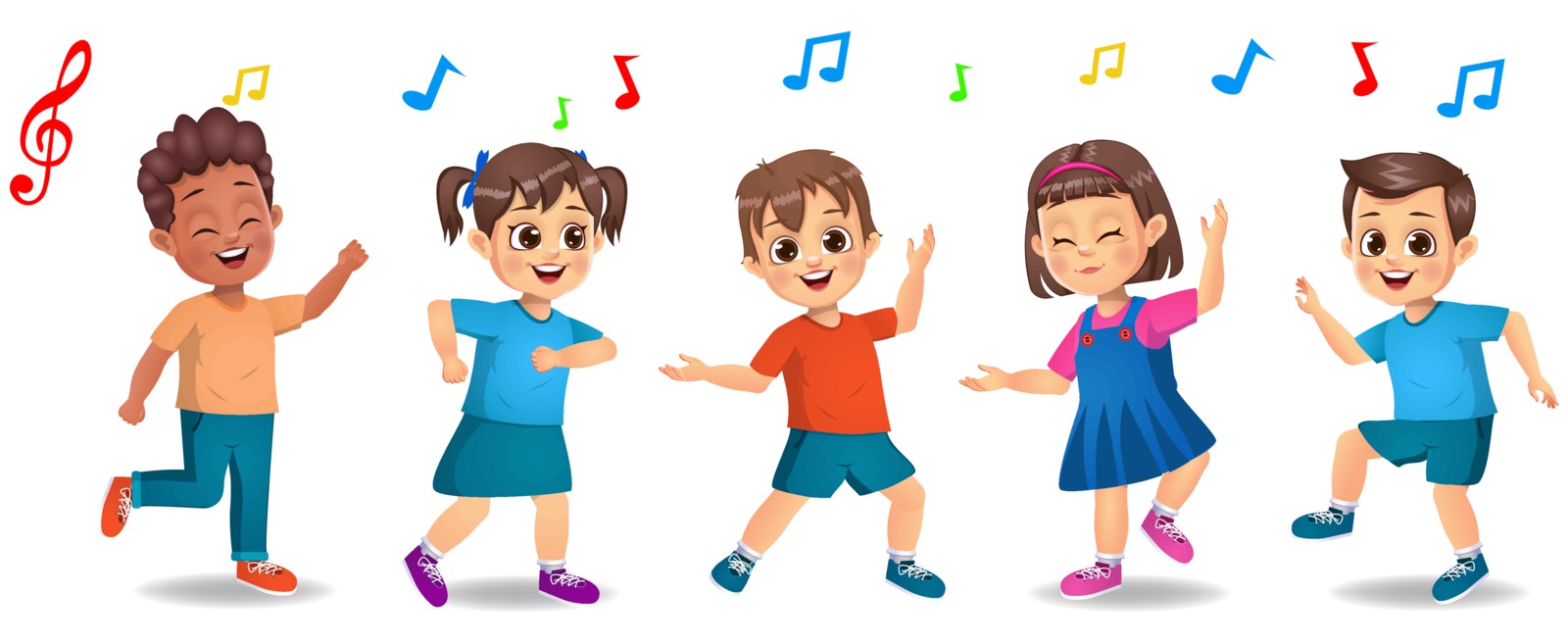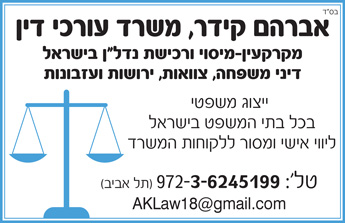"Precisely when they read a newspaper
or listening to the news,
I suddenly feel like
to ask
the most difficult questions.
even if i disturb
I have to ask,
Because until he comes later
i will forget
Everything."
(And this boy is me, Yehuda Atlas)
Attention deficit hyperactivity disorder, attention deficit hyperactivity disorder, ADHD, is an issue. Many children are diagnosed with various ADHD medications. In my work as a dance teacher, I also meet boys and girls from different populations who tend to have a low frustration threshold, helplessness, low self-confidence, introversion, domineering and unrestrained impulsiveness. The world of dance is a demanding world that shares values of order and aesthetics and being an art, it is a world that encourages creativity and personal development. Believing that the two can feed each other, in light of the times I encountered and the questions that arose in my studies as a dance teacher, I chose to study at the kibbutzim seminar for inclusive learning disabilities according to the Eshkol Wachman movement script and to build a group teaching program that deals with perfecting academic abilities through the Eshkol Wachman coordination exercise as a goal. and the concentration in girls at risk of ADHD – movement script EWMnaino a unique field of knowledge that combines theoretical and physical learning. (Al-Dor, 2005).
This teaching program will introduce the Eshkol and Kaman movement script, coordination exercises, and coordination games based on the spiral model for the development of coordination (Al-Dor, 2005) for at-risk girls with ADHD.
 This teaching program was built in a school in Ramla. The girls who participated are 10 at-risk girls aged 12-13 who suffer from the goals of the program:
This teaching program was built in a school in Ramla. The girls who participated are 10 at-risk girls aged 12-13 who suffer from the goals of the program:
Improving ordination through learning a movement script aimed at perfecting the response and concentration in girls at risk of learning disabilities. (See Appendix No. 4) The time is included to maintain attention and the center of longer chapters is at the center of the teaching plan and serves as a designated goal. The premise is that the longer the coordination exercises are, the more the attention and concentration of the girls are perfected for longer periods of time. Improvement in attention and concentration among the girls will have consequences and influence in additional learning areas beyond the focused and immediate effect and in the long term.
With the power of the coordination exercises through learning movement script to develop and demonstrate consistent interest, initiative and motivation among the girls in the coordination exercises and to bring the performance to the expected level in the cognitive, motor and emotional layer. (Youngsma, Patterson, Bruce, 2010). (See Appendix No. 2)
The E.W. movement script teaching program that deals with coordination practice offers at-risk girls/girls (see Appendix No. 5) coordinative movement exercises built according to a spiral model according to coordination. Coordination is a psycho-motor skill of variable complex levels, which integrates movement of the body's organs in a defined space and time (Al Dor, 2005). The teaching program based on the Eshkol Wachman movement script (see Appendix No. 1) is happy from a positive experience working in the field, in which the girls were exposed to movement and coordination exercises, coordination games, (see Appendix No. 2.1 – coordination exercises as well as movement), recording movement and reading. Linking them to the learning processes at school. The movement exercises based on movement and movement script E.W., constitute mediation to strengthen academic skills. It should be emphasized that when talking about and script movement, we mean voluntary and conscious movement (Sapir, lecture 2012).
What is Eshkol and Kaman writing? A movement script was created in Israel by Prof. Noa Eshkol in collaboration with Prof. Wachman, hence its name Avraham. It was first published in 1958. This language is a notation system that offers a set of symbols that represent basic values, by means of which the movement of the human body in space and time can be described. Required To break down motility-physical movement between basic components, and to a symbol that enables movement into a fruitful connection and basic skills in formal learning (reading, writing, arithmetic). (Eshkol, N. Vachman, A: 1958). Appendix No.
In order to understand the application of the EW movement teaching program, through games and coordination exercises, the principles of the movement script that underlie the construction of the teaching program must be noted:
- The human body is built as a chain of joints (organs) connected by joints. (Appendix No. 1) 2. Single chapter movement is inherently circular.
- A spherical outline system is used to organize the circular movement.
- Each joint in the chain of the human body is a center of a private outline system. All systems are parallel to each other and to the conceptual system.
- A writing page in a special format that represents the human body on its organs, is used to record the movement of each chapter in space and time.
- Registration is done using agreed signs – mainly numbers and other graphic signs.
In addition to this, the teaching program is based on the principles of the spiral model for the development of SMDC coordination, which guided the learning process and led the students to improve their achievements (see Appendix No. 2, the spiral model, SMDC). The spiral model consists of simple exercises that develop into complex exercises that contain within them the previous steps that were expressed in this teaching plan.
Another important finding is that learning according to the program is reflected in that it changes the existing behavioral repertoire (including the coordinative one) and creates new behavior patterns. The fluctuations and changes in movement structures are a necessary element that contributes to the development of coordination (Al-Dor Nira 2005). One of the highlights in the program is the perfection of interpersonal coordination – movement coordination between two people or more that requires cooperation and is based on a visual component. Therefore, the coordination exercises Eshkol and Kaman are taught in this teaching program in the form of games. The program is based on principles of social games and social learning games. This choice was due to the fact that this is a population that is at risk and has ADHD, and the game allows at-risk children with learning disabilities to improve their achievements (Lynette McMahon, 1996). In addition: the game makes it possible to increase motivation, (see Appendix No. 7) thinking, doing, enjoying, a liberating activity that helps the child strengthen his "I" powers and prepare him to create mutual relationships with his environment. It also contributes to the assimilation of the perfection of academic skills (Erkson, from Amelia Peroni, 2002). (See Appendix No. 6, the game)
Academic skills:
The movement intervention is aimed at perfecting the basic skills for academic learning such as reading, writing and arithmetic, organization of time and space, interpersonal communication. Also, through the coordination exercises A.V. It is possible to perfect skills necessary for learning such as visual and auditory perception processes, motor functions, sensory functions, attention and concentration, learning and remembering processes which are:
- Processes of perception – visual, auditory, spatial
- Learning and remembering – organizing information and using active memory
- Motor and sensory functions
- Attention and concentration – filtering stimuli, splitting attention, ability to persevere and flexibility in directing attention
- Control and regulation – skills of regulation and organization of impulses
- Social functions – reading socially agreed signs (Terza Sapir, lecture, 2012).
Coordination exercises:
In order to perform the various coordination exercises, the children are required to increase their concentration and persist over time in maintaining attention. As you progress in the exercise, more time of attention and concentration is required. Also, the children practice the memory of a sequence (a sequence of a number of movements, a sequence of a number of organs, etc.) both by performing the sequence with their body, and by reading it or writing it on the writing page. As you progress, you can increase the sequence of items you must remember in sequence. Learning sequences and coordinative exercises structured according to the spiral model, which may help them organize themselves. The processes of focusing attention and dividing them were found to be extremely essential for motor learning during the program and occurred throughout the entire learning process. The spiral model is cyclical and every time the students reached the coordination stage, the process began anew but at a deeper level and towards a more advanced achievement. The ability to move to a more advanced coordination phase resulted from maturation in the stages of information processing, training and diversity in training. The use of the SMDC learning model as a companion and supporter in the intervention/teaching program allowed me to decide and focus on working on a specific variable, and to change the emphasis on teaching and learning during the program, thus it was possible to simultaneously achieve a significant improvement in the level of maturation of the students towards a transition to more advanced coordination stages and the adjustment of the teaching and improvement as feedback immediately to the achievements of the students, which was also expressed during continuous attention and concentration. (Al Dor, 2005) (Appendix No. 2) The basic assumptions underlying the teaching program are:
Movement is a tool that helps girls with learning disabilities acquire learning skills and improve them. This program focuses on improving the attention and concentration disorder of the girls. (Al Dor, 2005). From this premise it must be concluded that the Eshkol and Kaman coordination exercises will have a positive effect on the attention and concentration of the at-risk girls who participated in the program.
In addition, learning movement script has a contribution to the development of coordination. According to Nira El Dor's research (Nira El Dor, 2005). From this it follows that if movement improves learning skills, including ADHD, and movement script has an effect on the development of coordination, then the combination of teaching coordination exercises with the help of Eshkol movement script learning has the potential to improve the learning disabilities of the girls participating in the program. In addition, the coordination exercises help with cognitive improvement in perfecting orientation in space and time, in perfecting the flow of movement, perception, remembering, control and control, etc. (Terza Sapir, lecture, 2012).
Learning disabilities when I chose to focus on perfecting the attention and concentration disorder through the Eshkol and Kaman coordination exercises.
Appendix – 1: Motion document:
What is Eshkol and Kaman writing?
The EW movement script was created in Israel by Prof. Noa Eshkol in collaboration with Prof. Avraham Wachman, hence its name.
It was first published in 1958. This language is a notation system that offers a set of symbols that represent basic values, with which the movement of the human body in space and time can be described. In our experience, the fact that it is possible to break down movement-physical phenomena into basic components, and to symbolize these phenomena in a limited system of agreed signs allows for a fruitful connection between movement and basic skills in formal learning (reading, writing, arithmetic).
For the purpose of understanding the application of the EW movement script, the principles of the movement script that served us in building the work plans with the children will be explained in the beginning of the chapters:
- The human body is built as a chain of joints (organs) connected by joints.
- A single chapter movement is circular in nature.
- A spherical outline system is used to organize the circular movement.
- Each joint in the chain of the human body is the center of a private outline system. All systems are parallel to each other and to the conceptual system.
- A writing page in a special format that represents the human body on its organs, is used to record the movement of each chapter in space and time.
- Registration is done using agreed signs – mainly numbers and other graphic signs.
- The human body is built as a chain of joints and joints:
Looking at the structure of the human body allows us to deal with several questions: What are the names of the body's organs? How many organs does it have? What groups are they divided into? How are they related to each other? What is the length and thickness of the organs? What is their function?
By looking at these questions, you can come up with options for working on different learning areas:
- Enrichment of vocabulary, day and conceptualization
- Understanding parallel functions (symmetry and asymmetry, dominance or lack of dominance of a side: right – left)
- Strengthening body image as a component in building a proper self-image – I am whole and made up of interrelated parts.
- Movement of a single chapter is circular in nature:
The fact that each chapter moves in circular movements, allows us to meet with the concepts of the whole and its parts and different concepts of size: how can the circle be divided? What size circles can be performed in different body parts? What are big circles and what are small circles? These topics allow dealing with the following areas:
- Basic concepts in mathematics and geometry (whole, half, quarter, quantities, sizes)
- Strengthening the ability to analyze and synthesize (the concepts of the whole and its parts)
- Flexibility of perception and strengthening generalization and inference skills (the circuit can be performed with any organ, and in different sizes)
- A spherical outline system is used to organize the circular movement:
The feature of the member which is fixed at one end and free at the other end requires a spherical system. The globe is mapped as an outline system by lines of longitude and latitude (as in a globe). The combination of the horizontal and vertical component gives the possibility to define the position – direction – position of a member. The form of the transition between position and position defines the trajectory of the movement. In the outline system, a starting point must be determined from which the numerical system is built and branches off.
- Each joint in the chain of the human body is a center of a private outline system.
From here you can find out: where do different body parts point? What is the angle between adjacent members? Which direction is the whole body facing? Which direction are you going? Where does one movement begin and end? What track are you moving on?
The areas that can be strengthened around these questions are:
- Working with the outline system allows strengthening the ability to orient oneself in space
- Analysis of the relationships in the given space – location, direction, distance
- Planning directions of movement while taking into account the external space
- Identifying the location of different body parts in relation to space and identifying the relationships between them
- The understanding of space as a relative array that changes depending on the determination of a starting point, allows flexibility of the spatial perception.
- The need to focus on direction requires focus and concentration. 5. A writing page in a special format that represents the human body by its organs:
The page is a grid page, built so that each member is represented in one line. The number of rows is determined by the number of members actively participating in the movement event. The page is read in time sequence from left to right, for one member. Each addition of a member requires reading either from top to bottom or from bottom to top.
- Registration is done using agreed signs.
Basic signboard
Literature – 9 8 7 6 5 4 3 2 1 0
Parenthesis – ( ) [ ]
Traffic signs (types of traffic) – Plane: Cone: V Rotation:
Contact and disconnection signs – = T
The use of a written page raises the following questions: How to translate the movement into a graphic symbol? What combination of signs are joined together for a movement meaning, from a single sign to how many signs are joined together? How to arrange the marks in the grid? What are the reading directions? How many movement instructions can be read in sequence? When to start and when to finish? What is the duration of one movement? What is the duration of a movement sequence?
 Dealing with a writing page allows the strengthening of many functional areas:
Dealing with a writing page allows the strengthening of many functional areas:
- The page forces us to define a movement sequence, and target a starting point and an ending point.
- The skill of filtering stimuli, persistence and flexibility in directing attention is required.
- Reading the signs translates into movement, and strengthens visual – movement integration – strengthening the ability to integrate between different areas of perception.
- The ability to work graphically, within a defined framework, is reinforced.
- In visual-movement integration you can get tangible feedback on identifying the information.
- The page allows an exact distinction in the location of the faults and difficulties in the context of reading-writing (reading letters, words and sentences)
- The page enables the coordinative timing of different organs for different periods of time – focusing attention and splitting attention.
- The need to read in two directions (up and down – the participating organs, from left to right – the sequence of events in time), enables the processing of the whole and the parts.
- Since each combination of signs is an instruction to act, the child is required to understand what is being read in order to act.
This method offers a relatively limited system of graphic signs that rely on an analytical thought process. The signs represent fundamental values with which movement can be described. The method of recording in the movement script makes it possible to refer to the three basic units of any movement phenomenon: the body, space and time. Hence, treating the problems of space, time and the body as described above can help the student with dyslexia.
The body – which includes the directions and trajectories of movement of the body parts is seen as a system of axes (these are the joints) that hold each other and are dependent on their relationship to the outline system, which expresses the space. The time shows the reader the amount of time he has to perform a certain movement or action.
The writing page that represents these three values is flexible and can be changed according to the information we need to write. The signs usually consist of numbers, letters and other graphic signs. Similar to other extra-linguistic writing systems, such as in the language of mathematics and music, the use of movement writing enables the study of dance in an in-depth and academic manner (Eshkol et al., 1973)
Since the movement script is a language consisting of sign language in which the student learns to connect a symbol with a meaning and the meaning is expressed in movement. It is very easy to see if the student read and understood the written movement and applied it with his body. Improving a student's reading ability in cursive writing and his success in performing the exercise will lead to improving the skill of connecting a symbol to meaning in general, as well as improving reading – which consists of connecting a letter to a sound, to a word that makes up a complete sentence. Furthermore, the movement writer Eshkol and Kaman works on spatial perception skills (especially the exercises in which the horizontal system is used and different steps in space). An improvement in spatial perception will also lead to an improvement in reading as described in detail about space (page 18). Also, an improvement in the coordinative ability of combining several actions at the same time also helps in the reading process because reading combines several elements within it – locating the letter, linking it to the sound, adding it to the next letter that makes up a whole word from which sentences are made up (see expansion on quantity on page 19). Also, the feeling of success, progress and improvement will ultimately lead to an improvement in the student's self-image and sense of ability.
Coordinative skill in performing a movement exercise based on the Eshkol-Wachman movement script
The purpose of the work is to characterize the coordinative complexity required in performing a movement exercise based on the Eshkol-Wachman movement script, and to reveal the possibilities inherent in this language, for examining variables of coordination.
Coordination is a psycho-motor skill of variable complex levels, which integrates movement of the body parts in a defined space and time.
Eshkol-Wachman traffic reporter (EWMN)
One of the unique uses made possible by relying on this method, is the complex movement execution in its coordinative aspect, which allows the connection of dances which in essence are devoid of a characteristic style, but due to the common denominator between them they can be experienced and classified as another style in dance.
The objectivity of Eshkol Vachman's movement writing reveals possibilities and combinations that do not depend only on the author's taste and style – which indicates the coordinative potential of the method in several aspects:
- Due to the structure of the writing page, the reading process is also carried out horizontally, from left to right – when the sequence of movement events of each of the body parts is described in a separate row, and also vertically – to organize the movement of all the body parts in each given time unit.
- A temporary distance is created between the reading and decoding phase and the performance phase, a distance that requires the ability to abstract and remember the learned sequence, in order to allow the creation of the movement in its entirety, with each member in action.
- Reading the text here is complex, multi-stage, multi-directional and contextual; The reading process takes place throughout in back and forth movements, while re-feeding, to verify its decoding.
The work of teaching and learning that is common in EWMN classes emphasizes learning the role of each organ or group of organs, which requires physical performance and coordinative skill to separate the movements between the various body organs, until the chordal combination of all the body organs in a given unit of time.
Summary
Motion script is a language that the child learns, a language that is based on understanding movement that the child learns to read, write and perform. Its uniqueness is that its understanding translates into a sensory and visual experience.
- Learning is experiential – through movement, and formal – through directed and defined rules.
- The child has the freedom to succeed within a framework that has a clear correspondence.
- The child gains tangible re-feeding, and can use unequivocal control processes over his functioning
The method teaches the child a special language and requires him to carry out with his body what he has learned and understood. Learning is different from formal school learning, in the way it is acquired. The child translates movement into symbolization; reads signs and translates them into movement; Writes signs and translates them into movement, thus building himself another channel to deal with the learning processes.
Emphasis is placed on cooperation and movement coordination with other children, based on the newly acquired language. This enables and even strengthens interpersonal communication, requires the adaptation of personal time to the general time, and also enables the examination of the acquired knowledge and its understanding.
Despite the successes reported by those working in this way with children and adults, we would like to reiterate that the work is experimental, grew out of experience in the field, and deserves to be confirmed by scientific studies (use of experimental and control groups).
Eshkol, N. And Kaman, A: Movement Notation, 1958.
Sapir Tartza, lecture 2012.
So as we have already said, performing a coordination exercise at a high level of complexity requires preparation of the motor control system – preparation that involves time. Many factors affect the duration of preparation and the method of preparation for performing motor skills, such as the need to be precise in the movement, the complexity of the movement, the degree of concentration of the performer, the degree of practice and the musical complexity of the skill.
Preparation is reflected in several horizons, in the alertness of the body's organs, in spatial intention, in timing and in the mobilization of cognitive resources. A person beginning to learn a new coordinative motor skill involves a coordination pattern of time and space, which he derives from learning done in the past. This view points to the existence of a transfer from an initial pattern, represented by a coordinative strategy preferred by that person, to a new skill that he is trying to acquire.
Stability in coordinative activity will ensure that the learner will be able to maintain coordinative patterns and adapt to changing conditions – the hallmark of skilled behavior. The combination of the trained and untrained components will lead to the stability of the acquired pattern and thus strengthen the learning process as a whole.
Another important finding is that learning is manifested not only by involving new behavior patterns, but by changing the existing behavioral repertoire (including the coordinative one) and creating new behavior patterns. The fluctuations and changes in movement structures are a necessary element that contributes to the development of coordination.
In the professional literature you can find methods for assessing motor (and coordinative) learning:
- Search for improvement and consistency in performance, while training.
- Using tests that check, after a time, what remains as a result of previous learning.
- Using tests that test the performance of a routine skill under new conditions and contexts (in a different location, in a changing variation).
- Observing the consistency and stability that characterizes the coordinative patterns during training and in the test. This method gives the examiner an opportunity to observe the transfer taking place from previous learning to new learning.
- Observing the degree of softening of movement between two adjacent organs.
 Appendix-3: Learning disabilities.
Appendix-3: Learning disabilities.
What is a learning disability?
"A learning disability is reflected in a large gap between the child's overall ability and the level expected of him according to age or class and between his actual level of functioning" (Heiman, 2000). Learning disabilities result from poor neurological function in various areas such as language, visual perception, disturbances in attention processes, mathematical skill, understanding causal relationships.
In 1994, the Ministry of Education in the State of Israel defined five basic characteristics of learning disabilities:
- The expression of the learning disability is different and varied.
- The learning disability is caused by difficulties in acquiring basic skills (as mentioned above), or in using them. Despite the efforts that the individual invests, he does not reach the required level.
- Learning disability is internal and congenital. It cannot be "cured", however the severity of the disability and its manifestations can change.
- Behavioral/social difficulties sometimes accompany the learning disability and it is possible that they are caused by it, but they are not the cause of the disability.
- The lack of learning opportunities and experiences, or teaching that is not adapted to the individual does not cause a disability.
(Heiman, 2000)
A learning disability (abbreviated as: LL) is a developmental disability that impairs basic learning functions (reading, writing and calculation), and significantly hinders a person from acquiring and expressing knowledge and skills at the level expected of people of his age, education and level of intelligence. Some professionals consider learning disabilities to be learning disabilities Dyslexia, dysgraphia and dyscalculia only and some also include skills such as listening, speaking and conceptualization as areas of learning that are affected by learning disabilities, and therefore include in the definition of learning disabilities also difficulties such as attention deficit disorder, concentration and hyperactivity (Nofer Yishai-Kirin and Adi Perry, 2002), language impairment (D.V.M. Bishop, 2009) and non-verbal learning disability (Ilana Modelinger, 2006).
According to research in the field, it is now accepted that a learning disability stems from neurodevelopmental factors (Miri Katz, 2007). Therefore, it continues throughout a person's life, and impairs their functioning even in adulthood (Lea Kuzminski, 2004). Appropriate treatment may help a person with a learning disability to express knowledge and skills and reach a better exploitation of his personal potential in the field of learning.
Learning disabilities are characterized by heterogeneity (different people can have diverse profiles of disabilities), and they affect a wide range of learning skills (Kavale, K..A 2009) (Spaulding, L. S.; and Beam, A. P,. A person can have more disabilities One learning, thereby creating a situation of co-morbidity or double morbidity. An appropriate professional diagnosis process of the learning disability refers to a variety of characteristics of the disability, as well as other factors and disabilities that may appear alongside it.
This entry will mainly deal with the main learning disabilities – dyslexia, dysgraphia and dyscalculia.
Definition of learning disability
The central importance of defining learning disabilities is for the process of locating and diagnosing people with learning disabilities (Kavale, K. A.; Spaulding, L. S.; and Beam, A. P., 2009). This is because the professionals rely on the definition and the criteria it provides when they try to determine whether a certain person has a learning disability or not. This determination affects the treatment and assistance that will be recommended to that person later, therefore it is very important that it reflect his true condition.
The main problem in defining the learning disability is that there are still disagreements in the professional discourse regarding a number of issues related to its basic essence and distinguishing it from other phenomena that may affect the learning ability and academic functioning of a certain person. In fact, the definition of learning disability is one of the main and oldest issues in any discussion on the subject. Accordingly, learning disability has been given a variety of definitions over the years by different groups and bodies (Lea Kuzminski, 2004). You can get an impression of the different positions and approaches in the field by comparing these definitions. However, the aspiration is to reach a single definition that is agreed upon by all professionals and serves the field well by enabling optimal response to people with learning disabilities. Therefore, the official and legal definition of learning disabilities should be constantly updated according to the accumulated knowledge in the field and reflect the essence of this disability in the best way Kavale, K. A) Spaulding, L. S.; and Beam, A.P., (2009).
Different definitions of learning disability
- According to the DSM-IV diagnostic manual, the accepted definition for establishing a diagnosis of a learning disability is a situation where the individual's achievements in standard tests in reading, arithmetic or written expression, which are delivered in person, are significantly lower than expected based on his age, level of education and level of intelligence. These learning problems interfere with a person's academic achievements or daily life activities, which require reading, arithmetic or writing skills. In this definition of the diagnostic guide, the emphasis is on the "impairment model", and the reference is to the gap between expected achievements and the level of performance in achievement tests.
- Definition of learning disability according to the United National Commission on Learning Disabilities – NJCLD from 1994 – this definition has been adopted by many researchers and its advantage is that it was formulated by representatives from a large number of professional organizations and parent organizations (Lea Kuzminski, 2004).
Learning disability is a general term that refers to a group of heterogeneous disorders that manifest in significant difficulties in acquiring and using listening, speaking, reading, writing, conceptualizing and/or mathematical abilities. These disorders are internal, and it is assumed that they arise from a central neurological dysfunction, and can be detected throughout the life cycle. Although learning disabilities can occur simultaneously with other limiting conditions (sensory impairment, mental retardation, emotional or social disturbance or external conditions – cultural differences, insufficient or inappropriate teaching) – the learning disabilities are not a direct result of these conditions.
- According to the law on the rights of students with learning disabilities in post-secondary institutions, 2008 (DSM-IV-TR 2008:
"Learning disability" – a disability that affects cognitive processes, and is manifested in significant difficulties that do not correspond to what is expected for the age of the person with the disability in acquiring skills or using the skills of attention and concentration, language, reading, writing, conceptualization, executive functioning or computational, social or emotional abilities , and with the exception of learning difficulties resulting from one or more of these only: sensory impairment, motor impairments, mental retardation, mental disability or external conditions, such as environmental, cultural or socio-economic deprivation. According to the World Health Organization, "disability" is a concept that depends both on the environment in which a person needs to function and on his physical-cognitive abilities. Therefore, a person may have a learning disability in a certain society or culture and not have a disability in another society or culture. This depends on the importance that the particular society gives to the skill that is affected by the disability and its importance to the person's functioning in that society.
 Areas of disability expression
Areas of disability expression
Learning disabilities are characterized by great heterogeneity 2009) Kavale, K. A.; (Spaulding, L. S.; and Beam, A., and they can be expressed in different ways and with different degrees of severity (Ministry of Education, Director General's circular 5644/4, b).
According to the definition, learning disabilities directly affect only academic skills and learning functions. Therefore, the initial difficulties will be manifested for the most part within the framework of the school and sometimes even in kindergarten (Spector Noya, 2005). (in preparatory activities for first grade). Theoretically, a person with a learning disability without other difficulties should function like any other person in any non-academic activity (classes, youth movements, etc.). Despite this, in practice there are cases where this is not the case and sometimes you can see children with learning disabilities who have difficulty in other situations as well. This is because the initial academic difficulties are usually accompanied by emotional and behavioral difficulties. This is due to the social consequences of the disability and the reactions of the environment and not from the disability itself. The explanation for this is that learning disabilities can also have secondary effects (Ministry of Education, Director General's Circular 2004/4, b)
which arise from ineffective coping attempts and negative experiences accumulated during the experience in studies. Since the initial manifestation of the disability often occurs in early childhood, this is the time when its secondary consequences are formed. For example, a student who has difficulty reading may be very afraid that the teacher will ask him to read in front of everyone in the class. He may develop psychosomatic symptoms such as stomachaches in the mornings to stay home, or disrupt the class so that he will be taken out of class so that he does not have to read aloud. In this case, the behavior disorders and the sick feeling are not a direct result of the learning disability, but a result of ineffective coping with the difficulties by the child (who does not know a more effective way).
If such a situation continues for a long time, it may create a negative cycle in which the teaching team labels the student as problematic and is unable to see the educational potential that exists in him. This has a great impact because the school years are the time when the young child consolidates his personality as an adult. Emotions such as frustration and fear of failure can greatly affect the student's self-concept and emotional world. In fact, about a third of the children referred for diagnosis with behavioral and emotional problems suffer from unrecognized learning problems, which secondarily cause difficulties in daily functioning (Miri Katz, 2007). In order to prevent such situations, it is very important to locate the disability as early as possible. It is possible to begin the therapeutic process whose goals are to improve the disabled functions, to impart effective ways of coping and to prevent the accompanying problems that the disability can create indirectly as described (Ministry of Education, Circular of the Director General 5564/4,b)
The appearance of the initial difficulties at school age naturally focuses the discussion on the "child" with learning disabilities. It is very important to focus on this period because it encourages early detection and treatment, which are essential for the optimal integration of the student into the education system and society in general. However, it is important to remember that the learning disability does not disappear in childhood and can manifest itself throughout life. The person with a learning disability continues to experience the same difficulties in basic learning skills even as an adult and must find ways to meet the diverse demands of the various stages of life. This is in addition to dealing with the cumulative consequences of negative experiences gained in childhood and society's difficulty in accepting the learning disability at a more mature age.
In this context, dyslexia and ADHD are not considered learning disabilities, although they can have a great impact on school performance. This is because they directly affect non-academic fields as well. Therefore, their treatment should include the appropriate professionals, as will be detailed later. There is a noticeable difference between students with learning disabilities in their skills and academic achievements (Ministry of Education, circular from the Director General 5564/4, b).
The disabilities and their secondary effects may manifest in three main areas: cognitive, emotional and behavioral.
cognitive domain
A learning disability has nothing to do with a person's level of intelligence. (Nofer Yishai-Karin and Adi Perry, 2002) So a person with a learning disability can have high, average or low intelligence like any other person in the population (just as there is no connection between the color of the eyes and the size of a person's shoes). The initial difficulties that result directly from the disability are reflected in one or more of the basic learning skills such as reading, writing (which includes: handwriting, spelling and expression) and arithmetic (Ministry of Education, Director General's circular 5564/4, b). Additional areas of cognitive expression that are often seen in learning disabilities arise from the secondary consequences of the initial difficulties, or from a co-morbidity that is common among learning disabilities. They can manifest in one or more of the following ways:
- Difficulties with attention and concentration.
- Difficulties in the field of language, difficulties in completing or receiving abstract parts of speech.
- Difficulties in visual perception and auditory perception.
- Intersensory integration difficulties, mainly in the visual and auditory channels.
- Difficulties in orientation in space and orientation in time.
- Difficulties with memory, short term and long term, and working memory.
- Various difficulties in thinking, which include the lack of effective learning strategies, difficulties in organizing time, organizing attention, rigidity in thinking and more.
It is important to distinguish between the difficulties that arise directly from the disability – such as difficulty in decoding written words that directly results from dyslexia, and secondary difficulties that arise from them – such as difficulty memorizing a written list of concepts following the difficulty in decoding. Due to the chronic nature of the learning disability, the initial difficulties will accompany the person throughout his life. It is true that with the help of appropriate treatment the basic ability in these areas can be improved, but only up to a certain level. On the other hand, the accompanying difficulties are easier to overcome by strategies and adapting the learning style. For example – recording the written list and memorizing from listening instead of reading, so that the difficulty in deciphering will not interfere with learning new concepts. In this way, the impact of the disability on the function observed in the field can be minimized.
Also, for difficulties arising from co-morbidity, an adequate response must be given according to the source of the difficulty. If the difficulties do not arise from the learning disabilities directly or indirectly, treatment designed for learning disabilities may not be helpful or even harmful. In case of doubt, it is recommended to consult a professional.
 emotional domain
emotional domain
The secondary damage of the learning disability in the emotional sphere is greatly influenced by the reaction of the environment to the initial difficulties it creates. The learning disability is a source of great confusion because it is not visible to the eye and appears only in situations where it limits the expression of abilities, so that in other situations the function can be in accordance with the norm and even above it (Gilat, E., 2006). Therefore, in contrast to other disabilities that are more visible to the eye, Many times the environment does not see justification for the difficulties caused by the learning disability in a person who is perceived as "normal" in any other respect. In this situation the environment does not show understanding or forgiveness and certainly does not offer the necessary assistance. In addition, many times the environment even accuses the person of lack of will or self-control and resorts to the use of punishment which is not justified and only worsens the situation.
Accordingly, for the most part the emotional difficulties first appear in childhood following the difficulty of the learning disabled to meet the demands of school. Initially, the emotional difficulties can be expressed in negative moods and they may worsen and accompany the person even in his adulthood if he does not receive an adequate response for them. In addition, the emotional field can create a negative cycle that feeds itself among learning disabilities. This is because, similar to how the difficulty in studies can lead to emotional difficulty, so emotional difficulties can in turn worsen the damage to academic functioning (which will further deepen the emotional difficulty and God forbid). This is because the emotional field has a great influence on the ability to think. For example, a feeling of tension impairs the creative ability to come up with new ideas, when the first idea or attempt fails (Yoav Ben-Dov, Ilana Shamir and Zahava Canaan, 2004). Also, there is a close connection between emotions and memory, so they can damage the encoding process or cause forgetting.
Therefore, in order to prevent indirect damage of the learning disability in the emotional and academic sphere, the child needs a lot of mediation and help and support in his learning processes (Yashi-Karin, Nofer, 2007). Despite this, in practice the encounter of learning disabilities with the education system is often painful. They fail to act according to the requirements as their classmates do and often disappoint themselves, the teacher (or kindergarten teacher) and the parents (Yashi-Karin, Nofer, 2006).
Because success in the fields considered by the child's parents and teachers is a central motive in his life, the anxiety regarding expected failure increases especially in children with disabilities (Shlomo Sharan and Yael Sharan, 1971). Many times students with a learning disability develop exam anxiety because of a history of failures and frustrations that they have accumulated over the years. . In these situations, a feeling is created that causes a kind of paralysis during the test (Spector Noya, 2005). It is important that the professional diagnoses the learning disability because it is the cause of exam anxiety. A diagnostic error can lead to even more frustration and increased anxiety. This is because the anxiety is secondary to the learning disability.
The repeated academic failures may also lead to a state of acquired helplessness. This is a situation in which, after many attempts to deal with it without success, a feeling arises that any further attempt is bound to fail, therefore the only choice is to accept the situation and "give up". When no path to success is visible, academic tasks can turn from an energizing challenge to a crippling difficulty. A student who is in this situation will also avoid asking for assistance from the educational system (Lea Kuzminski, 2004).
Damage to self-esteem is very common among the learning disabled (Yashi-Karin, Nofer, 2006). The inability to meet the demands of society and the history of repeated failures can damage the self-image of the learning disabled and make them mistakenly think that they are stupid or unsuccessful (Lea Kuzminski, 2004). This can lead to a fear of standing out and taking a place, and attempts to emphasize the inability to lower the level of views. Absurdly, low self-esteem created in this way may prevent one from recognizing the areas of strength that may enable one to overcome obstacles in the future (Leah Kuzminski, 2004). Accordingly, it was found that the difficulties arising from the disability are a stable part of the identity expression of students with learning disabilities, while their strengths and advantages do not reflect the self-concept they feel. Following this concept, the expression of abilities is accompanied by a fear of their very existence and a feeling that they cannot be trusted (Zadok, A. and Ben-Sira H., 2011). In addition, the subjective self-esteem may undergo extreme fluctuations, because it is greatly influenced by the environment. Dependence on external feedback causes vulnerability. While positive echoes of success can make a person feel that he is a genius, any mishap can cause a fall and a feeling of complete failure (even if the injury seems relatively minor to an outside observer). The fragility of self-worth can also lead to denying any possibility of error and blaming the environment, in an attempt to avoid a sense of failure. This leads to significant difficulty in receiving comments and constructive criticism (Yashi-Karin, Nofer, 2006).
behavioral domain
As mentioned, behavior problems are not a direct result of the learning disabilities, but an expression of an ineffective way of dealing with the difficulties. By themselves, learning disabilities mainly affect the person himself and do not disturb the environment (David, Hanna, 2010). Because the initial difficulties of the learning disability mainly affect functioning in school, the secondary problems in the field of behavior often begin in childhood within the framework of formal education. Without an adequate response, they may worsen over the years and also affect the functioning of that person as an adult.
Basically, the emotional needs of a student with a learning disability at school are no different from any other person: he needs a relationship with an educator figure who recognizes his value, he needs a sense of belonging to a group of equals, a sense of competence and a sense that his presence in the classroom has meaning. However, sometimes the difficulties caused by the learning disability cause these children to try to satisfy those needs at a pace and style different from the accepted norm. When the environment does not show understanding and support, this may harm the construction of the self and be reflected in negative behaviors (Yashi-Karin, Nofer, 2006).
A student with a learning disability may begin to avoid activities in which he is afraid of experiencing failure, in order not to experience a drop in self-esteem (Yashi-Karin, Nofer, 2006). He may even refuse to go to school as a reaction to extreme difficulty, discouragement and a feeling of helplessness (Spector Noya, 2005). In order not to prove the initial difficulty that causes the avoidance attempts, he will try to come up with different reasons for this (Yashi-Karin, Nofer, 2006), which do not reflect the source of the problem. In addition, chronic frustration damages vitality and may lead to procrastination, difficulties in persistence and difficulties in investing effort over time, which will sometimes also appear in activities outside of school. Instead, in order to continue receiving positive reinforcements, he will try to arouse the admiration of the environment by searching for quick successes (Yashi-Karin, Nofer, 2006). Anger may appear in learning disabilities when a person feels hurt that the environment blames him unfairly, or that he does not receive enough reinforcements for his efforts. It is important to emphasize that most of the time the reason for anger is an injury to the person's self-esteem and therefore will not always be visible to others. Sometimes anger can lead to aggressive behavior or a tendency to be assertive as an attempt to defend (Yashi-Karin, Nofer, 2006). Such students tend to get involved with high frequency and intensity in social problems with their peers, and in relationships with teachers, parents and siblings (Gilat, P., 2006).
In many cases, when an appropriate response is given to the initial educational difficulties, a significant benefit is seen in the behavioral field, even if sometimes this will be felt in the field only gradually throughout the progress of the treatment. If after prolonged treatment no benefit in behavior is seen, there could be several reasons for this. It is possible that the person has already adopted the negative behavior patterns and continues to behave that way out of habit or because he does not know other ways. In this case, one should turn to cognitive-behavioral therapy in order to develop a more appropriate and adaptive behavior. Also, it is possible that the negative experiences have already created emotional difficulties that accompany the person and then you need to turn to a psychologist or other mental therapy (you can choose according to the person's interests and preferences – play, music, art, animals and more). It is very important to get professional parental guidance at this stage.
If there are still problems, it is possible that there are additional difficulties beyond the learning disability that cause a condition of co-morbidity and one should look for them. For this reason, it is important to rule out additional problems at the initial diagnosis stage, so that the treatment will focus on the root of the problem and the person will receive a proper response to all their needs in the fastest time. Another possibility is a misdiagnosis that may be caused by an inaccurate diagnosis. As mentioned, there are situations that affect learning but do not constitute a learning disability. For example, the difficulties associated with ADHD will be manifested in impulsivity, restlessness, difficulties with organization and planning, and more. Corrective instruction alone is not enough in these cases and the appropriate professional should be contacted.
Society's attitude to disability
The learning disability poses a logical challenge to all concerned (Amalia, P., 2000). It is not for nothing that this subject arouses discussions and debates in society and receives extensive attention in the media. It is difficult to explain the many consequences of the learning disability only by the initial difficulties it creates in basic learning skills. For example, how can a difficulty in reading directly affect barriers to participation in social gatherings? In fact, most of the more significant difficulties are not a direct manifestation of the disability. This is because the attitude of the environment is largely responsible for the behavioral and emotional problems that arise in many learning disabilities. Such problems have a great impact on the formation of a person's personality because he first encounters difficulties at school as a child, they have implications for his academic performance and his ability to integrate into society in his adult life.
People with difficulty adapting due to learning disabilities (and/or ADHD, communication disorders, and motor problems), have to deal with many failures and difficulties from childhood. They must constantly struggle to build a healthy sense of self-worth in the face of these difficulties. However, many times their struggle is not understood by the environment, and is not supported by it (Yashi-Karin, Nofer, 2006). Since the gaps between what appears to be potential learning ability and its application can be extremely extreme, it becomes difficult to accept and reconcile with the very existence of the impairment (Amalia, p. 2000).
The hidden and specific nature of the learning disability can mean that the learning difficulties are not seen as primary and do not receive the serious treatment required by the environment. This is because the learning disability is not reflected in external physical characteristics that are visible to the eye, so it is not possible to "see" if a certain person has a learning disability based on their behavior or appearance. In addition, a person with a learning disability can demonstrate very impressive cognitive and creative abilities and skills, but at the same time repeatedly have difficulty acquiring and performing very basic learning skills such as reading, writing and arithmetic (Lea Kuzminski, 2004). This is because one of the characteristics of learning disabilities is gaps in functioning, so that the same person can have areas of normal and even high functioning alongside other areas in which functioning is low (Spector Noya, 2005). The functional gaps characteristic of learning disabilities can cause confusion and embarrassment. Many times it is very difficult for the environment to accept the possibility that a person who looks completely normal and even behaves well in many areas, will have a surprising difficulty in tasks that should not pose any difficulty to a normal person of his age. However, children and adults with learning disabilities often have difficulty precisely with tasks that are perceived by others as easy, understandable and simple (Spector Noya, 2005).
The lack of understanding that this situation creates may sometimes lead to looking for another explanation for the low achievements and blaming the learner for actually having the difficulties, claiming laziness or lack of investment on his part (Lea Kuzminski, 2004). In a meritocratic society, which evaluates people according to their ability and the amount of effort they put in, the impression formed about the student in this context greatly affects the attitude of the teachers towards him. Teachers tend to reward more and punish less students who, in their opinion, invest a lot of effort in their studies, regardless of the diagnosis of a learning disability (Heiman, T., 2004). However, the message that is often conveyed to students in the education system, according to which investment of effort will lead to success in learning, may be misleading for those with learning disabilities, Because the learning disability does not go away and the effort invested will not necessarily lead to success (Spector Noya, 2005). A person with a learning disability can feel that society's expectations of him are directing him to a path that does not suit him, but at the same time feel the need for approval and acceptance as more important than personal desire (Zadok, A. and Ben-Sira H., 2011).
Most children with learning disabilities find it difficult to meet the academic requirements of the school (Gilat, E., 2006). In cases where the learning disability does not allow the student to meet the demands of the adults towards him and the environment in response, preaching, reprimanding and reprimanding, he stands between two options: either accept and internalize the negative criticism thrown at him, or choose not to consider the position of the environment towards him. If he dismisses the claims of the environment, he is filled with a sense of guilt that damages his self-esteem and may lead to situations of deep anxiety and sadness. Therefore, in the absence of another option, the healthier solution for one's soul is to reject the attitude of the environment towards him and not to internalize the negative statements (Yashi-Karin, Nofer, 2006). However, this choice is also very problematic. If this situation persists and does not provide a real answer to his needs, he will stop considering the opinion of the adults so as not to get hurt. At first he did not attach importance to preaching and criticism and at a more advanced stage he may develop a general disdain for authority (Yashi-Karin, Nofer, 2006). In this way, the student may develop unwanted behaviors which in turn will increase the criticism of the environment towards him. Such a situation starts a negative cycle in which negative reactions create negative behavior which increases the negative reactions and repeats. The company can also be a source of support for learning disabilities. Intuitively, people with good social links succeed in helping their friends in order to cope better with various difficulties on the basis of solidarity and mutual help. Learning disabilities often offer their classmates oral help in subjects and areas in which they are strong. This is in exchange for receiving help in areas of difficulty such as copying from the board, reading the textbook and more (David, Hanna, 2010). In this way both parties contribute and contribute.
The need to increase awareness, sensitivity, and acceptance regarding learning disabilities on a personal and public level becomes more and more critical, as the educational aspirations and goals of modern society become dominant and complex (Amalia, P., 2000). The difficulties of integration in school often arise despite sincere and strenuous attempts to prevent of them, both on the part of the student and on the part of the educational staff (Yashi-Karin, Nofer, 2006). Teachers report a feeling of pity towards students with learning disabilities and milder anger reactions towards a lack of investment on their part compared to students without disabilities (Heiman, T., 2004). As described, the difficulty can stem from insufficient interaction between the disabled and the educators, and the lack of compatibility between them. This relationship must be carefully examined in order to find methods of action that will allow the educator to create an environment that satisfies her own needs and the needs of the student with learning disabilities. When the student feels satisfied, he will slowly turn to self-regulation and integration, out of trust in the ability of the environment to meet his needs and out of trust in his abilities to adapt himself to the demands of the environment (Yashi-Karin, Nofer, 2006).
The chronic nature of the disability
A learning disability accompanies a person throughout his life and does not "pass with age". However, the way the disability manifests may change in different periods over the years, according to the developmental and environmental requirements of society. Society has difficulty recognizing the chronic nature of the difficulties caused by the learning disability because it sees the learning difficulties that appear at a young age as an expression of only a temporary developmental stage, which creates a false expectation that the disability in all its aspects will pass with age (Leah Kuzminski, 2004).
Recently, the awareness of the manifestations of learning difficulties in adults and their many consequences has begun. One of the reasons for raising awareness of the issue is the phenomenon in which many parents discover that they are learning disabled when they are asked to diagnose their children and recognize the characteristics of the disability themselves. Because learning disabilities are hereditary, there is a high probability that the parents of learning disabled children are learning disabled themselves. Most of these parents could not have discovered this earlier because there was no awareness of the issue when they were students. Many times an adult who discovers that he has a learning disability goes through a period of mourning for the opportunities he missed and the difficulties he could have avoided. He may also experience great anger at the environment that blamed him unjustly and did not help him deal with his difficulties. A person must be allowed to process this difficult insight before they are expected to begin dealing with their own and their child's disability. Unfortunately, there is still no organized support system for such cases and most parents have to face this crisis on their own.
Another factor is the great importance of academic education in modern society and the integration of learning disabilities into higher education. Many students encounter new difficulties compared to what they were used to in high school. The academic requirements are increasing and the willingness and ability of the lecturers to be flexible is limited compared to that of the high school teachers. There are cases in which students who managed to compensate for the disability on their own during high school only discover that they have a learning disability when they come to university. This usually happens in cases where the disability is relatively mild and/or the person is particularly smart. This discovery can be difficult both for the person and for his social and educational environment. Because the learning disability is seen as a phenomenon of childhood, the possibility that it will manifest itself only after high school is unacceptable and arouses suspicion for many reasons. This can lead to a refusal to acknowledge the existence of the disability and the guilt of trying to fraudulently obtain relief from academic requirements or evasion of various obligations. Fortunately, awareness of the issue is developing and academic institutions have begun to establish various support centers for students with learning disabilities, which specialize in the unique characteristics of this population. The goal is to enable these students to fulfill their academic potential despite their disabilities and at least open the door to receiving professional training at a high level. That is why it is important to make sure that any assistance and adjustment provided will not harm the knowledge and skills required of all graduates of the studied field (Zadok, A. and Ben-Sira H., 2011).
Recently, the discourse about the integration of learning disabilities into the world of work after completing their studies has also begun. The emphasis is that choosing a career should be out of freedom and not out of a lack of choice. A person with a learning disability should strive to integrate into a profession that matches his skills and difficulties like any other person, but the unique nature of the disability and the functional gaps it creates make this choice more complex. This is a separate aspect because in many cases the requirements of working in a certain profession are very different from the requirements of studying for that profession. These changes can be easier or more difficult for the learning disability depending on the situation. In many cases the massive need for reading and writing is reduced in the world of work compared to academia and this can come as a blessing to many learning disabilities. However, the need to meet deadlines is more significant. The world of work does not allow extra time and extra days and the job of slow workers is put at risk. (Zadok, A. and Ben-Sira H., 2011).
The phase of transition from academia to the world of work poses unique difficulties for learning disabilities. The learning disabled employee is required to develop ways of dealing with new situations he has not encountered before. This will not necessarily harm his function, but the period of adaptation to new positions may be longer and more tedious. What's more, he usually has to do it on his own. Unlike remedial teaching, which has already developed many ways to help the learning disabled integrate into school, the awareness of the need for intervention and treatment also in the world of work is very low (Zadok, A. and Ben-Sira H., 2011).
Just like in school, the challenges a learning disabled person encounters in the world of work reflect not only the direct difficulties of the disability, but also their emotional and behavioral consequences. For example, the job interview is not only seen as a situation in which an opportunity is given to obtain one or another job, but as a situation that reflects society's assessment of the person. When the job acceptance question is seen as the same as the company acceptance question, every job interview can have a very strong emotional meaning. In addition, the very situation in which the interviewee was examined and tested can evoke painful memories in which unsuitable conditions prevented the expression of that person's ability repeatedly. In extreme cases, this can lead to reactions of paralysis and inhibitions (Zadok, A. and Ben-Sira H., 2011).
The difference between a learning disability and an intellectual disability
There is no connection between a learning disability and the IQ of a certain person. This means that the distribution of IQ in the population of people with learning disabilities is very similar to that of the general population. A person can have a high, medium or low IQ and have a learning disability that prevents him from expressing his ability. Also, a learning disability does not in any way indicate a low intellectual level (Ministry of Education, Director General's circular 2004/4, b)
The accepted definition of learning disabilities holds that the ability to learn, in one or more areas, is lower than expected based on the person's age, IQ, education and in relation to his performance in other areas of life. For the purpose of evaluating the cognitive abilities of the learning disabled, it is customary to use the age-adjusted Wechsler test. This is because a response pattern characterized by very large gaps between the verbal and performance part and/or between the subtests in that part is a very strong indication of the existence of a learning disability (David, Hana, 2010).
One of the characteristics of the learning disability is difficulty in learning specific skills that the great majority of people perceive naturally and intuitively without needing more than a slight effort. For example, most people who read and write for many years, do not write with spelling errors without putting unnecessary effort into it. Conversely, people with dysgraphia may write with many spelling errors even after decades of reading and writing. Spelling errors will continue to appear in people if their desire and effort is spent trying to prevent them. They will not remember the correct spelling of some of the words and some of the words they will write incorrectly even though they remember how to spell them. This happens due to the difficulty in automatically retrieving the morphological patterns of the words. Corrective instruction and assistive technology may reduce the problem but not eliminate it completely.
Compared to learning disabilities, severe difficulty learning due to low IQ is a different phenomenon known as mental retardation or intellectual disability. A person with an intellectual disability is defined as a person with an IQ lower than 70. A borderline IQ is an IQ of 70 to 80 (and some claim up to 84/85). In people with an intellectual disability, the low IQ may also create difficulties in a wide variety of areas of functioning and development.
learning disability and giftedness
Since learning disability is not related to intelligence, it also appears in gifted people. The combination of both learning disabilities and giftedness is not high in the population (because previously only 3-5% of the population are considered gifted). Gifted students with learning disabilities may "fall through the cracks" in the education system, because the combination of these two factors can create the impression of a normal student with average intelligence and without a learning disability (David, Hana, 2010).
- The high intelligence of these students can enable them to find effective ways to bypass the disability and get high grades relative to their classmates; But these grades hide the existence of the disability from the educational staff and make it difficult for them to locate it. If the disability is not identified, the student does not receive a response for it. In this situation, teachers who recognize the high abilities of the student but find it difficult to accept the concept of "gifted with a learning disability", may sometimes claim that he is pretending, lazy or claiming rights that he does not deserve such as adjustments in exams to which he is entitled (David, Hana, 2010). Even when a gifted student is suspected of having a learning disability, it may be identified at a very late stage (David, Hana, 2010).
- At the same time, the learning disability may hide the high intelligence, because even the good grades do not necessarily reflect the student's full ability. In this case, a student whose learning disabilities are not identified and whose grade point average ranges between 80 and 90, is also not identified for the enrichment programs designed for the gifted and suitable for the special needs that characterize them, and is denied the opportunity to study at a high level and open up to challenging professions or a track that is considered prestigious (David, Hana, 2010).
Therefore, although the functioning of gifted learning disabilities can be perceived as normal by the environment, which sometimes does not see the need for any intervention, these students feel that they fail to realize their full potential, and therefore they may experience great distress.
A combination of giftedness and a learning disability creates a challenge for the student's parents and teachers, who know that he can achieve very high achievements, but are required to convince him and themselves that his potential exists, despite all the failures that may occur within the school (David, Hana, 2010).
diagnosis
As mentioned, when learning disabilities are not identified and treated at an early stage, they lead to underachievement, repeated failures and negative reactions from the system (Dr. Miri Katz, 2007). Due to the great impact of cognitive function on a person's ability to integrate into modern society, it is very important to identify and diagnose learning disabilities early. A learning disability can be detected at different stages in the life cycle (Ministry of Education, Director General's Circular 2004/4, b) From the moment a learning disability is suspected, a learning skills diagnosis by a qualified professional should be sought (Spector Noya, 2005).
Because mediocre educational achievements and even below that are not necessarily an indication of the existence of a learning disability (David, Hana, 2010), according to the Ministry of Education, a student will be referred for diagnosis if, after locating and implementing an educational intervention by the school, he is still (Ministry of Education, executive circular "L 5564/4, b) :
- The difficulties in his academic performance continue despite the assistance he received in the area where his difficulties were identified.
- His progress following the educational intervention is only slight.
- The difficulties in his academic performance are particularly serious and the gap between him and the students of the class does not decrease and sometimes even increases.
Children with learning disabilities are sometimes incorrectly diagnosed as having mental problems or behavioral disorders because an appropriate diagnosis is not made (Spector Noya, 2005). Therefore, the diagnosis must be adapted to the nature of the reported difficulties, and must be carried out individually (Ministry of Education, Director General's circular 5564/4, b).
In addition, in order to obtain a complete picture in the diagnosis, the diagnostician must create good rapport with the diagnosed person (Shi-Karin, Nofer, 2009). For parents who sent their child for diagnosis, a good sign regarding the diagnostician is when the child willingly goes to the next appointment (Shi-Karin, Nofer , 2009).
At the end of the diagnosis, the diagnostician must summarize the findings in writing, so that the written report will be understandable for every person (whether he is a parent, teacher, integration teacher, occupational therapist, neurologist, clinical psychologist, etc.) 2009).
The goals of the diagnosis
There are two tender goals for diagnosing learning disabilities:
- The first is receiving eligibility for assistance and adjustments from official bodies such as the Ministry of Education, by establishing an official diagnosis from a professional authorized for this according to the law. Currently, for this purpose, a psychodidactic diagnosis is valid for 5 years and a didactic diagnosis is valid for 3 years. 7, takes up to the age of 25. That is: even in academic studies.
The second goal is mapping the difficulties and abilities for the purpose of building an appropriate work plan. Therefore, in addition to the diagnosis, the diagnosis report will detail the recommendations for effective ways of dealing with each case (Spector Noya, 2005). The diagnosis is only the first step in the treatment of learning disabilities and does not constitute a satisfactory solution in itself. However, due to the great variability that characterizes people with disabilities Learning (Ministry of Education, Director General's circular 5564/4, b)
- A good diagnosis can greatly contribute to the success of the treatment, the improvement of school achievements and the prevention of related problems.
Accordingly, students with learning disabilities often undergo two diagnoses. One in elementary school to identify the problem, and the other in middle school in order to qualify for adjustments in the matriculation exams (Shi-Karin, Nofer, 2009).
Determining a learning disability – criteria for diagnosis
The definition for the purpose of establishing a diagnosis of a learning disability according to the Ministry of Education (Ministry of Education, Circular of the Director General 5564/4, b)
A person is diagnosed with a learning disability when his achievements in standardized tests in reading, arithmetic or written expression, which are given to him individually, are significantly lower than expected based on his age, level of education and level of intelligence, and the learning problems cause significant disturbances in his academic achievements or in other day-to-day activities that require reading skills , arithmetic or writing.
Professionals
Different professionals use different types of tests. Diagnoses that are not conducted by specialists for learning disabilities put the subject at risk of misinterpreting his behavior and abilities and installing a coping framework that does not constitute a solution to situations caused by his difficulties. Parents have the right to choose the type of diagnosis and the professional who will diagnose their children (Spector Noya, 2005). For this it is important to know the different options. As mentioned, some of the disabilities are diagnosed by a variety of factors with diverse professional backgrounds. Also, each factor uses different diagnostic tools and different indicators. When there is a suspicion of a difficulty that is not in the examiner's field of expertise, he must recommend that the examination be extended to the appropriate specialist (Ministry of Education, Circular of the Director General 2004/4, b).
- In the context of learning disabilities, it is customary to turn to a didactic diagnosis or a psychodidactic diagnosis by psychologists.
- When difficulties arise in the field of language or hearing, you should contact a speech therapist.
- When motor or sensory difficulties arise, you should contact occupational therapy.
- Suspected ADHD will be diagnosed by a psychiatrist or neurologist.
Ruling out other causes of difficulty
It is important to distinguish between "disability" and "difficulty". In the professional world, the term "learning difficulties" describes a decrease or reduction in functioning for any reason. Difficulty can be described by any factor that values the person in question (the person himself, parents, teachers and kindergartners, etc.). In the context of school, the difficulties that will most often attract attention are slowness, mistakes or inaccuracy and low test scores. On the other hand, the term "disability" refers to the damaged mechanism, and it can be said that a certain person has a "disability" only after a diagnosis is given by a qualified professional. In the diagnostic process, it is possible to check the source of the reported difficulties and suggest appropriate coping methods (Spector Noya, 2005). A disability may affect the function (hence its problematic), but with the help of treatment it is possible to develop compensatory abilities that will bypass the difficulties so that the damage to the function is as limited as possible. Thus, even though learning disabilities do not go away with age and accompany a person throughout his life, his actual academic achievements can certainly improve to the point of fully realizing his potential (Ministry of Education, Circular of the Director General 5564/4, b).
However, if the difficulty seen in the field is not due to the disability to which the treatment was adapted (but from another factor), it is likely that the effectiveness of the treatment will be low or will have no effect at all. In addition, the lack of treatment of the real cause of the difficulty can even lead to a worsening of the situation. Hence the great importance of differential diagnosis.
An incorrect diagnosis may lead to a misdiagnosis, thereby preventing promotion and reducing options at an early age (Spector Noya, 2005). Today, there has been a great deal of awareness of various factors that can appear as learning barriers and harm academic achievements, but their source is different and therefore their treatment is also different. For example – a lack of sleep hours can significantly harm academic performance (Shi-Kirin, Nofer, 2009), thereby resembling a learning disability. Many factors can be ruled out through routine tests within the health insurance fund. The tests include: hearing test, eye test, visual focus test, blood pressure and pulse, blood test including thyroid, iron, vitamin D, vitamin B12, sugar level, etc. It is advisable to rule out these factors before seeking a diagnosis, and it is possible to consult the family doctor for this purpose.
The existence of a learning disability does not contradict the existence of other conditions that may affect the ability to function in school and in other areas. That is why it is important to consider the possibility of co-morbidity, in which there is more than one factor that can explain the difficulties. If during the diagnosis it is suspected that the source of the difficulties is not only the learning disability, the other factors should be checked and treated accordingly.
What is the diagnostic test?
Diagnosing learning disabilities is a tool that allows the diagnostician to determine the causes and consequences of learning difficulties in various situations (Spector Noya (2005). During the diagnosis, all the essential information is collected to provide a diagnosis and recommendations for treatment, while striving for a maximum understanding of the mechanisms behind the difficulties in academic functioning. The diagnostician is responsible for choosing the areas of diagnosis according to his professional judgment (Ministry of Education, Director General's Circular 2004/4, b)
according to the needs of each subject.
At the beginning of each diagnosis, background data must be collected that includes (Ministry of Education, Director General's circular 5564/4, b):
- The reason for the referral.
- The student's achievements and current performance in the various subjects.
- The developmental-family and educational background.
- Previous evaluations and diagnoses.
- Interventions and treatments done in the past.
In order to explain the source of the difficulties, the cognitive mechanisms underlying the basic learning skills must be examined, which include (Ministry of Education, Director General's circular 5564/4, b):
- Cognitive processing processes in the spoken and written language.
- Visual, spatial and auditory perception processes.
- Administrative functions (Executive Functions).
- Attention and concentration functions.
- Memory.
- Visuo-motor and grapho-motor skills.
- Processes of social-emotional cognition.
Also, the diagnosis must also refer to other aspects such as:
- The educational background of the learner, the teaching strategies and methods to which he was exposed.
- Developmental, emotional and social aspects (such as motivation and investment versus avoidance). (Name).
 diagnostic tool
diagnostic tool
Diagnosis of learning disabilities requires a multidisciplinary approach and includes several diagnostic centers, this goes beyond the characteristics of the learning disability and the mechanisms associated with it. The diagnostic tools are designed to provide the diagnostician with the information required to write the diagnosis and provide a diagnosis through measurement and evaluation. Because each tool provides only a certain type of information, it is forbidden to establish a diagnosis based on the findings of a single tool. (ibid.).
The diagnostic tools for the various disabilities are in constant development, but a significant part of these diagnostic tools still require improvement. In order to know which tool is the best for the purpose of diagnosis, the professionals have developed clear rules according to the theory of the tests. Any new test or tool should be evaluated according to indicators for diagnostic tests before it can be used as a basis for giving a diagnosis. In order for a certain test to be considered a reliable diagnostic tool, it has to meet certain criteria, with the goal being to reach the level of the gold standard.
Before using any diagnostic tool, the performance distribution of different people of different ages in the same test should be checked and group norms should be created. Recently, awareness of gender and cultural differences in various measures has been increasing, so it is necessary to compare the performance of the subject to the appropriate population. Only when there is a norm that was built based on a representative sample can it be known whether the performance of a certain subject is above or below what is expected of his peers. Collecting norms is an expensive and lengthy process, therefore many tests are published and are used without norms or with a small and unrepresentative database. A test without norms can only be analyzed qualitatively and there is a problem in making a diagnosis based on it.
In addition, make sure that the test is valid and reliable. That is, it must be checked that it does distinguish between normal and defective functioning in the tested index every time it is transferred. That is, it always locates all subjects who have difficulty and does not locate normal subjects. This criterion also requires a lot of resources because in order to prove it, an organized academic study must be conducted with a representative number of subjects.
care
The need to treat learning disabilities stems from the basic premise that every student is entitled to equal opportunities in realizing his educational potential (ibid.) and from the social consensus that learning disabilities must always be kept in the education system and prevented from dropping out (David Haber, 1990), because the primary and secondary effects of disabilities may harm well-being And the quality of a person's life in society, when a child suffers from learning disabilities and is not given adequate care at a young age, the results can be acute both for him and for his environment (David, Hanna, 2010).
Learning difficulties affect the student's performance in the classroom and the achievements in the various academic subjects. Accordingly, the goal of the treatment is to provide effective tools to deal with the difficulties in order to prevent an educational gap and secondary difficulties such as frustration and damage to self-image. An example of this is the use of punctuation marks to prevent spelling errors or to reduce them. The treatment can also be done in a fun way that combines games and puzzles based on literacy skills such as crosswords, scatters, fours and more. A person with a learning disability obviously needs help in the field of studies, but many times the assistance is needed in other areas as well (Spector Noya, 2005). In addition, due to the chronic nature of the disability, the treatment must be adapted to the different stages of life, such as military/national service, academic studies and integration into the world of work.
There are various treatments accepted to help students with learning disabilities (Spector Noya, 2005). The ways of dealing with learning difficulties go through different incarnations influenced by the development that has taken place in the fields of study and research (David Haber, 1990), out of the ambition of the professionals in the field to give the best answer to these difficulties. Due to the differences between learning disabilities, an intervention plan suitable for each individual must be built. The therapeutic system should be built in such a way that it first responds to the learning disability and the secondary difficulties it may create. In addition, because of society's difficulty in understanding and accepting the disability, the parents and the educational staff must be guided on how to come to terms with the disability, help and promote the person. At the same time, the person needs to learn how to explain his difficulties to those around him in a respectful and efficient manner in order to stand up for his rights. Furthermore, learning disabilities are often characterized by comorbidity. That is, when a learning disability is detected, there is a reasonable chance of the discovery of additional factors that may interfere with learning. For example, a significant percentage of learning disabilities also suffer from attention deficit hyperactivity disorder. Therefore, it is very important to rule out the existence of additional problems, and if they do exist, the treatment system must be adjusted to address them as well.
The common treatment for learning disabilities is remedial teaching (David, Hanna, 2010). which focuses on the construction of effective learning skills in view of the objective difficulties of the learner. Corrective teaching requires a special approach, construction and adaptation of the work method. In the early stages of teaching, the student corrects the basic skills he was unable to acquire in school. In addition, in order to enable the student to integrate into the class of his peers, it is necessary to help with the content studied and not only with the performance skills. Often, when instruction is individually tailored, the student makes up the gap from their grade level. (Spector Noya, 2005).
The longing of students with learning disabilities for success in the fields considered by the adults to be significant in their lives does not fall from the great strength of the anxiety about failure. Because this longing can be nourished through remedial teaching (Shlomo Sharan and Yael Sharan, 1971), individual tutoring is the most important means not only of completing gaps in the class's curriculum, but also of establishing a sense of competence and self-worth (Yashi-Kirin, Nofer, 2007).
There are additional treatments derived from other fields of psychology (such as biofeedback), and in the provision of assistive technology equipment (such as computerized reading for dyslexia or word prediction software for dysgraphia). There are various alternative treatments for learning disabilities, including the Tomatis method, the neuro-developmental-functional approach and more.
Currently there is no medical treatment for the learning disabilities dyslexia, dyscalculia and dysgraphia. The public discourse regarding drug treatment for the purpose of improving academic functions refers only to attention deficit hyperactivity disorder, for which there are drugs for temporary relief of dealing with some of the symptoms. Ritalin is the most common drug for this purpose. Drug treatment is one part of a multidisciplinary treatment system and does not constitute a complete answer to ADHD. In any case, do not give medicine without consulting a qualified doctor!
The education system
In modern Western society, education is of great importance for a person's economic and social status. His success will be reflected in his integration at work, his social adjustment and his emotional adjustment as an adult (Lea Kuzminski, 2004). The school years are the years in which a person develops his personality and prepares himself to integrate into the world of work. Therefore, a person's long experience with educational institutions from kindergarten to high school has a great impact on his future. The aspiration for every person is to grow up to be a healthy and independent person who contributes to society and enriches it, and not a rude or abusive person (God forbid). Therefore, the company has an interest in doing as much as it can in order to give every person the opportunity to develop and grow in the best possible way.
In the context of learning disabilities, there is a risk that the disability itself will harm their achievement compared to children who do not suffer from learning disabilities. So that due to the continuous difficulties encountered by a person with a learning disability in his learning processes, he may also show difficulty in academic, professional and social adaptation (Lea Kuzminski, 2004). Unfortunately, there is a growing population of children with or without learning disabilities, for whom the education system in Israel is not adapted. This situation hurts the parents and teachers, but mainly the children themselves who do not receive a response to their emotional and academic needs (Yashi-Karin, Nofer, 2006).
Problematic teaching methods make it difficult to stay in school in general and especially for students with learning disabilities. Being in an unsupportive learning environment makes the situation even worse. Many of the children diagnosed as hyperactive children or suffering from learning disabilities become a heavy burden on the educational system because the educational staff creates negative and maladjusted interactions with them (Yashi-Karin, Nofer, 2006). When the school cannot provide a person with an appropriate learning environment nor the help he needs, it may unfairly lower expectations of the student. This is a very problematic situation, because lowering the level of requirements will not improve the person's functioning and may even lead to gradual dropping out of the various professions (Yashi-Karin, Nofer, 2007).
Many times the resources allocated by the school to help students with learning disabilities do not correspond to all the needs of the person and therefore there is also a need for additional help that is provided privately at home (Yashi-Karin, Nofer, 2007). But the manner and amount of private help provided at home depends on the parents' awareness, desire and financial ability. Hence this help is not always available to a person. The character of the teacher and the way the school conducts itself has a profound and powerful effect on the personal development of children (Amalia, P., 2000). In order for children with learning disabilities to also grow up to be adults who contribute to society, one must do as much as possible to prevent the disability from creating discrimination and harming their ability to get the best out of their school years like any other person. Accordingly, the education system is obliged to provide an adequate response to learning disabilities, within the framework of providing equal opportunities (Ministry of Education, Director General's Circular 5544/4, b) and the Student Rights Law.
locating
Learning disabilities are reflected in functional difficulties in various learning areas as a result of a neurological condition (Spector Noya, 2005). Therefore, naturally, learning disabilities will manifest themselves in the most prominent way within the school. It is not for nothing that this is the most common disability in the education system. It is estimated that about ten percent of children in Israel suffer from learning disabilities (from the Margalit Committee report, 2000)
When learning disabilities are not identified and treated, they may harm the person and his social environment. Accordingly, the process of finding the Sifri home is of great importance, the purpose of which is to focus on the student's difficulties, to serve as a basis for referral to an appropriate diagnosis and to mobilize efforts to improve his achievements (Ministry of Education, Circular of the Director General 5564/4, b)
The signs of learning difficulties can include slow and/or incorrect reading, unusual spelling errors for the age, written expression that does not meet the requirements of the assignment, mistakes in performing calculations or misunderstanding of verbal problems in arithmetic. Finding learning difficulties can be done through diagnostic tests designed for this purpose, through observations of the student in class and through examination of his various products (ibid.).
The evaluation procedure should indicate whether the student is indeed performing in a significant gap relative to what is expected at the class level. Teachers and educators have a key role in this process, because they meet the student on a daily basis and can directly get an impression of his performance in the field. The assessment of the student's academic performance by the teacher or educator includes two components (ibid.):
- Examination of the level of basic achievements in the learning skills of reading, writing and arithmetic.
- Examining learning patterns in the various subjects such as strategies, organizational skills and performance of academic assignments.
Some of the Ministry of Education's activities on the subject include raising awareness of the issue among parents and establishing detection and diagnosis centers (ibid.).
Educational intervention
Children with learning disabilities can and should study within the framework of regular education (Spector Noya, 2005). And most of the time they will not need a special or separate educational framework (Shlomo Sharan and Yael Sharan, 1971). This is because many learning disabilities can benefit greatly from the normal classroom and remedial teaching. Sometimes even receiving support on only one selected subject can ensure their progress with the classmates. However, without this kind of personal help, the chances of their progress can be slim (Shlomo Sharan and Yael Sharan, 1971).
Since a student with learning disabilities needs help in learning, the system allocates resources for this according to the law of integration (Yashi-Karin, Nofer, 2007). After assessing the student's difficulties in the identification phase, an educational intervention plan must be built for him to promote his learning skills and achievements in the various subjects with reference to his specific difficulties (Ministry of Education, Director General's circular 5564/4, b).
In this way, greater accessibility can be created for the acquisition of new knowledge and skills. Intervention programs of this type, which are built by the educational staff of the school, are called TAHI or TLA.
The learning methods currently used in schools rely mainly on reading printed materials and multiple writing tasks, allocating fixed periods of time to learning. Things of this kind go against the technical abilities of the disabled student (Amalia, P., 2000). The goal of the educational intervention is to respond to students with learning disabilities in order to allow them to exhaust their abilities, without harming the required educational level. This is based on the assumption that by providing an appropriate answer, a student with a learning disability can bypass the difficulties and deal with academic assignments successfully (Ministry of Education, Circular from the Director General 5564/4, b). When the student's emotional need is fulfilled, he is able to accept the demands of the education system (Yashi-Karin, Nofer, 2006).
Due to the great diversity that characterizes learning disabilities, the system must ask itself about each individual student what he needs (Yashi-Karin, Nofer, 2006), the educational intervention requires a multi-professional and skilled team, for the purpose of building the therapeutic system and monitoring the progress. In addition, the student and his parents have a significant part in the construction and implementation of the program (Ministry of Education, circular of the director general 5564/4, b). Monitoring and coordinating all staff members can be an extremely complex task. For this purpose, the educator has to be in continuous contact with a large number of professionals, not all of whom she knows well. For example, in a conversation at school, ten people can sometimes sit down to discuss one student [15].
system resources
The teacher and the educational system are faced with real difficulties when dealing with the student with learning disabilities (Amalia, P., 2000). The size of the classes in Israel is a significant obstacle to the implementation of the educational intervention program. Although class size in itself does not affect the learning disability, it does affect the teacher's ability to help students with learning disabilities within the regular classroom. In a large class, the class teacher is not enough to reach all the students in order to impart significant and long-term learning processes to them (Shi-Karin, Nofer, 2009). In addition, the classes populated by a large number of students do not allow the teaching staff to treat each student according to his individual needs. In this way, they constitute a negative factor in increasing the number of children who have difficulty in regular classes (Shafira, Avi, 2004)
A teacher in Israel is expected to teach in a busy classroom much more than is customary in the Western world and this leads to a lot of stress, burnout and nervousness. Students with learning disabilities need individual work and personal attention even more than other students, but when the teacher is overwhelmed and helpless, he is unable to address them. In cases where their needs are not met, their frustration increases and they react with distress and restlessness. Thus, the student's problems may turn from learning problems to behavior problems (Yashi-Karin, Nofer, 2007).
In smaller classes the teacher will be less worn out and the students will receive more attention and attention to their feelings, desires and concerns in real time. The teacher will be able to be more creative and flexible and help with organization during the lesson (Yashi-Karin, Nofer, 2007). At the same time, some of the difficulties cannot be overcome in classroom settings alone, and there is a need for individual support that can give them a better answer (Amalia, P., 2000). However, often even the individual work done in "combination hours" is not enough to meet all the needs of the student (Shi-Karin, Nofer, 2009).
The teacher's position
The teacher's position has a great influence on the success of the educational intervention program. Unfortunately, teachers expect the academic achievements of students with learning disabilities to be lower compared to students without disabilities. As mentioned, these attitudes often stem from society's general difficulty in accepting and understanding the disability, which is accompanied by incorrect attempts to explain the student's difficulties as arising from a general lack of ability and/or lack of investment. In addition, the situation of the teachers in this aspect is even more complex. The requirement for teachers to be considerate and sensitive to the difficulties of students with learning disabilities may conflict with the requirement to project high expectations from students. However, regardless of the cause, attitudes according to which the student's chances of academic success are lower than they really are do not contribute to positive relationships between the teacher and the student. strengthen his self-image and do not motivate him to learn. From a social point of view, negative attitudes of the teacher may also affect the way in which the classmates of the student with a learning disability see him and refer to him (Heiman, T., 2004).
Instruction in teaching integrated classes may influence the attitude of teachers and help them deal better with the needs of students with learning disabilities (Heiman, T., 2004). – Through his body, through connection, through thinking and through experience (Yashi-Karin, Nofer, 2006).
Adjustments in the ways of learning and examination
Learning disabilities are sometimes entitled to special conditions in the examination methods called adaptations (Spector Noya 2005). These adjustments are intended to prevent a situation where the learning disability prevents a test from properly reflecting the knowledge and skills it is designed to test. This is because if a test shows an ability that is different from the one that exists in reality, then it does not fulfill the purpose for which it was intended. Hence, it is of great importance that the adjustment does not harm the difficulty level of the test or the required knowledge and skills (Ministry of Education, circular of the Director General 5564/4, b).
Therefore, the adjustments in the ways of the tests remove characteristics in the standard test conditions that are not relevant to the assessment of the students' knowledge, but are an obstacle in the expression of knowledge as a result of some kind of learning disability. For example, a student who has studied and knows 80% of the material in history should get a score of 80 on the test. However, there may be a situation in which, due to a factor that does not depend on the student's historical knowledge, such as slowness in writing, he will not have time to write everything he intended and will receive a grade of 70 or less. In this case the test does not reflect only his knowledge of history, but also the pace of writing which is not relevant to this matter. In this way, the disability may be an intervening factor or an alternative explanation – something that affects the validity of the test. In fact, the slower the writing, the greater the gap between the existing knowledge and the grade that will be obtained on the test. In order to correct the situation, such a student can be allowed to take an oral exam (or just complete the answer orally), type the answer on a computer and/or give extra time. In this way, the disability will not stand as an obstacle in the expression of knowledge and at the same time will not harm the quality and validity of the test. (ibid.)
The adjustments in the learning and examination conditions maintain the principle of equal opportunities by allowing students with learning disabilities to bypass the areas of difficulty and give adequate expression to the knowledge they have acquired without the limitations resulting from the disability (ibid.). In this context, it is important to emphasize:
- The adaptations do not come to give any advantage to the student with learning disabilities over another student who does not receive adaptations (ibid.).
- The adjustments are intended for students whose difficulties in academic performance are based on learning disabilities only, and are not intended for students whose difficulties arise from other factors (such as educational-environmental deprivation, absenteeism, lack of motivation and self-directed learning, inappropriate teaching, etc.) (ibid.).
Because the adjustments change the conditions of distinctions, they often require different evaluations on the part of the student. For example, an oral exam involves conversational ability and demonstrating confidence in an interpersonal setting, which cannot be measured in a regular classroom test. Because the rest of the students in the class are not tested differently, the curriculum does not include training the students for these situations. Therefore, the adjustments in the exam conditions require appropriate practice and training before the student can get the most out of them (ibid.).
In addition, not every adjustment will necessarily lead to an improvement in the student's achievements. This depends on his personal characteristics and other intervening factors. For example, it is likely that a shy student or a student with retrieval difficulties will have difficulty demonstrating his knowledge orally in front of an examiner. In this case, you may not see an improvement in function following the adjustment or you may even see a worsening of function (which will be expressed in a lower score). In order to make sure that the change in the conditions of the distinctions does improve the student's ability to express the knowledge he possesses, an assessment must be made for each adjustment given to the student, with the aim of checking its effectiveness in promoting his achievements (ibid.). Of course, we should not continue to allow an adjustment that does not improve the student's performance.
The nature of the adjustment is determined based on the specific difficulties diagnosed in the student. The Ministry of Education divided the adjustments into three levels according to the extent of the changes that apply to the exam format (ibid.): • Level 1 – adjustments that do not harm the essence measured by the exam. These adjustments will be approved by the Pedagogical Council, based on a didactic diagnosis. They include: extending the exam time, ignoring spelling errors, copying the exam, enlarging the exam questionnaire and an extended formula sheet.
- Level 2 – adjustments that may partially damage the essence measured by the exam, and they refer mainly to changes in the conditions of the exam but not in the software. These adjustments will be approved by the Pedagogical Council, based on a didactic diagnosis or a combined (psycho-didactic) diagnosis. They include: writing the test, reading or playing the test questionnaire in English – using an electronic dictionary and recording the answers.
- Level 3 – adjustments that change the essence measured by the exam and relate to changes in both the exam conditions and the software. Adjustments at this level are given in special cases only, with the special approval of the District Adjustments Committee. They include: a customized questionnaire, an oral exam and conversion of the matriculation exam in mathematics in another subject.
The data of the Ministry of Education in Israel reveal that between the years 1998-2008 the number of recipients of adjustments in the matriculation exams increased by 17.9% and that there are large gaps between the percentage of recipients of adjustments in the matriculation exams in established settlements and the percentage of recipients of adjustments in settlements of low socio-economic status. This figure is due to the fact that the Ministry of Education conditions the provision of assistance and adjustments upon the presentation of a diagnosis, while the cost of the diagnosis is borne by the parents, who do not always have access to it. For the rest, this gap will be reduced if the tests are subsidized by the Ministry of Education.
Parents of learning disabilities
While raising children is a difficult and demanding task even in normal situations, a child with a learning disability presents a difficult challenge to his family (David, Hanna, 2010). Parents who want to do as much as possible in order to allow their child with a learning disability to achieve academic achievements that reflect his abilities and to prevent him from frustration as much as possible are faced with an even more complex task. In families with learning disabilities, the amount of parents' investment in the child should be much higher (Yashi-Karin, Nofer, 2007). They have to invest a lot of time, energy and money in order to locate the appropriate experts who will help him achieve educational achievements despite his disability (David, Hana, 2010). This investment comes to some extent at the expense of the family budget, career development and the parents' free time (Yashi-Karin, Nofer, 2007). For example, when the child is treated individually in settings outside the school, the burden of transportation and payments joins that of the regular classes (Yashi-Karin, Nofer, 2007). In addition, children with learning disabilities often undermine and change family patterns and family members must be able to adapt themselves to these changes (Gilat, P., 2006).
The upbringing and education of a learning disability can evoke feelings of helplessness, despair and anxiety among the parents. Despite this, the difficulties of a person with a learning disability can appear to the eyes of the environment as less problematic because he looks like any healthy person and is perceived as normal. This has implications regarding society's expectations of parents. Because a learning disability is not prominent and visible, it does not invite attitudes of help and support from the environment, because it does not perceive the distress that may arise in the parents. Parents of learning disabilities feel different and alone and this feeling increases anxiety (Gilat, E., 2006).
Rarely do the educational staff recognize that for some children, not only does the educational system not teach and educate, but it also reinforces within them feelings of worthlessness and inadequacy (Yashi-Karin, Nofer, 2006). For example, teachers' expectations of their students' academic future are lower for students with learning disabilities compared to students without disabilities (Heiman, T., 2004). This position could be a self-fulfilling prophecy, thereby harming the student's achievements in addition to and separately from the difficulties that arise directly from learning disabilities. Sometimes the education system blames the parents by explaining the student's difficulty at school with the lack of boundaries at home, lack of love, hurt, etc., and demands that the matter be handled by them (Yashi-Karin, Nofer, 2006).
A student with a learning disability often needs homework to be done with him, so parents should be in regular contact with the teacher to know what homework is given in class every day (Yashi-Karin, Nofer, 2007). Parents don't always know how to help their child deal with academic difficulties and this can cause confusion and anxiety. This situation may lead to inappropriate reactions towards the child, which reflect the disappointment and anger towards him for not meeting their expectations. When the child perceives the negative reaction and reacts accordingly, a negative cycle can be created in which he tries to avoid the unpleasant interaction, thereby increasing the disappointment and anger of the parent (Gilat, P., 2006).
In general, the accepted working hours in Israel are extremely long and the parents prefer not to confront their children because they need peace after a long day of work. The result is less homework, more television, fewer hours of sleep and less ability to set limits and exercise parental authority (Yashi-Karin, Nofer, 2007). Learning disabled children with behavioral problems make it difficult for their parents to provide them with the required amount of support and restraint. Some parents react to this by imposing excessive discipline, following a sense of loss of control (Gilat, P., 2006).
Parents build their parental evaluation based on the social and academic successes of their children. A feeling of loneliness can arise when parents of learning disabilities are afraid to talk about guilt or hard feelings they have towards their children. Counseling groups can help parents develop an understanding and acceptance of their child's learning disability, deal with difficult emotions and create better conditions for effective adaptation (Gilat, P., 2006).
In the education system there is an awareness of parents' difficulties. In an attempt to address this issue, the Ministry of Education published a guide for parents of students with learning disabilities called "Ladders and Ropes". The guide includes theoretical knowledge, an explanation of the role of the education system and ways to help.
 Research
Research
The field of learning disabilities is still in research processes, both in the theoretical aspect and in the practical aspect of the treatment (Ministry of Education, circular of the director general 5564/4, b). Learning disabilities can result from a variety of factors that affect brain activity. The pathological mechanism of most learning disabilities as well as their mode of inheritance are not sufficiently understood. Also, there are many controversies in the field regarding definitions, diagnostic tools and appropriate treatment methods. However, there is a general agreement regarding the unique neurological basis of the learning disability and that it may impair academic functioning (Ministry of Education, Director General's circular 5644/4, b) There are differences at various levels between the minds of normal students and the minds of students learning disabilities Kavale, K. A2009).; Spaulding, L. S.; and Beam, A.P.).
The great importance of research in the field of learning disabilities stems from the assumption that if we manage to better understand how people with learning disabilities feel and act, we can create adapted learning environments and positive educational interactions for them (Yashi-Karin, Nofer, 2006), already from a very young age. One of the factors that has taken it upon itself to promote research and development in the field of learning disabilities is the Ministry of Education, Culture and Sports (Ministry of Education, circular from the Director General 5564/4, b).
First, the study of learning disabilities was done within the framework of educational sciences and psychology and therefore mainly dealt with the behavioral and educational aspects. The development of neuroscience led to studies of learning disabilities from a brain perspective, which focuses on examining the source of the disability. These studies can serve as an effective tool for expanding knowledge and improving processes in the field of education (Kavale, K. A.; Spaulding, L. S.; and Beam, A. P2009).
Different learning disabilities are studied at different rates. Most brain research has been done on dyslexia, comparing it to a normal reading process. In attention, concentration and hyperactivity disorder, a lot of research effort has been made and many factors have been found related to the pathological mechanism and its heredity, such as structural changes in different parts of the brain.
Within the framework of the education system, the effect of the label of learning disability on the teacher's views of the student, and the effect of this view on the student in various fields in the long term (Heiman, 9, 2004) must be investigated.
The accumulated research knowledge about learning disabilities and attention deficit disorder focuses on the childhood period of school and academic life. A new field that the world of research has not yet addressed properly is the transition phase of learning disabilities from academia to the world of work (Zadok, A. and Ben-Sira H., 2011).
In the bibliography:
- ^ Learning Disorders, DSM-IV-TR
- ^ Definition of Learning Disabilities, National Joint Committee on Learning Disabilities, 1990
- ^ 3.0 3.1 3.2 Nofer Yishai-Karin and Adi Perry (2002). Diagnosis of Attention Deficit Hyperactivity Disorder (ADHD). On the Hebrew Psychology website
- ^ D.V.M. Bishop, (2009). Specific language impairment as a language learning disability. Child Language Teaching and Therapy 25 (2), 163-165
- ^ Dr. Ilana Modelinger, Learning Disabilities, The Hebrew University
- ^ 6.0 6.1 6.2 Dr. Miri Katz (2007). Attention disorder – ADHD and related morbidity – Comorbidity. The Medical
- Leah Kuzminsky (2004). "Speaking for themselves – self-advocacy of learners with learning disabilities". Yosod Publishing and the Institute of Inspectors
- Kavale, K. A.; Spaulding, L. S.; and Beam, A. P., (2009). A Time to Define: Making the Specific Learning Disability. Learning Disability Quarterly, 32(1), 39-48.
Kavale, K. A.; Spaulding, L. S.; and Beam, A. P., Brain research and learning disabilities. Mind and education
- Ministry of Education, Director General's circular 5564/4 (b)
- Spector Noya (2005). Learn about learning disabilities about other psychology. Tel Aviv: Reading in Colors Publishing
- Gilat, E. (2006). Intervention processes in counseling groups for parents of children with learning disabilities. Review and research in teacher training. 19-48
- ^ Yoav Ben-Dov, Ilana Shamir and Zahava Canaan (2004). New Spring: The Israeli encyclopedia for youth. Encyclopedia Aviv Publishing Ltd.
- Yishai-Karin, Nofer (2007). Attention deficit disorder and learning disabilities – who will help if the class is too big and the parents are busy?, on the Hebrew Psychology website
- Yishai-Karin, Nofer (2006). Special children: the encounter of hyperactive children (ADHD) and learning disabilities with the education system according to the theory of the self. On the Hebrew Psychology website
- Shlomo Sharan and Yael Sharan (1971). Learning disabilities and their correction. Ra'anana: Poalim Library.
- Zadok, A. and Ben-Sira H. (2011). From academy to career. Psychoactualia. 31-35
- David, Hana (2010). On learning disabilities, attention deficit disorder and intelligence. Hebrew psychology website.
- Amalia, E. (2000). The learning disability and the "life teacher". face.
- Hayman, T. (2004). The inclusive classroom: teachers' attitudes towards students with and without learning disabilities Daf, (38), 152-165.
- Shi-Krin, Nofer (2009). Executive functions (EF) – what is the connection to attention deficit disorder and horse riding. Hebrew psychology website.
- David Haber (1990), I didn't want to read: multidimensional treatment of learning disabilities. Ra'anana: Ramot.
- From the report of the Margalit Committee (2000)
- Shapira, Avi (2004). attention deficit disorder (ADHD). Hebrew psychology
Appendix-4:
ADHD
The children with ADHD (Attention-Deficit and Hyperactivity Disorder
This is a neurological, physical disorder, resulting from a slight difference in the structure of the central nervous system of these children. This difference is characterized by certain character traits, which are reflected in the functioning of the children.
This syndrome is divided into three main types (according to the main component that appears in each child):
- Attention deficit disorder
- Hyperactivity
- A combination of attention deficit and hyperactivity.
The main difficulties in this syndrome are:
Lack of attention and concentration – difficulty in maintaining attention for a long time, difficulty in filtering the stimuli around them, difficulty in organizing and organizing their belongings.
Hyperactivity (excessive mobility) – difficulty in following instructions, difficulty sitting still, restlessness, sometimes sleep is also restless.
Impulsivity – difficulty controlling impulses, increased risk taking, difficulty waiting in line, reacting before thinking.
The contribution of the movement lessons and movement writing to the children's difficulties:
- In order to perform the various coordination exercises, the children are required to increase their concentration and persist over time in maintaining attention. As you progress in the exercise, more time of attention and concentration is required.
- The children practice the memory of a sequence (a sequence of a number of movements, a sequence of a number of organs, etc.) both by performing the sequence with their bodies, and by reading it or writing it on the writing page. As you progress, you can increase the sequence of items you must remember in sequence.
- Learning structured sequences and exercises, which may help them organize themselves.
According to Tagansky (2006), the movement cultivates mental ability and social understanding, develops the interpersonal domain, imparts a sense of control, arouses satisfaction and enthusiasm and builds discipline and social ties. E, a relaxing movement that teaches personal values and interaction with others, such as: perseverance, determination, responsibility, belonging, order and personal cleanliness, teamwork, obeying rules, etc.
Ward (2008) also suggests seeing the movement as a social tool that may ensure a satisfactory and healthy existence for the people living in the community, due to it being an excellent way to maintain the physical and mental health of the individual. In addition to this, Ward claims that the practice of movement can establish an interaction between the person and his environment, through his body. That is, through the being of the movement, social relations can gradually develop between the single student and the other students (Ward, 2008). In addition to this, it emerges from the socio-cultural theory according to Erikson and Vygotsky, that interpersonal interactions contribute to the design and development of a person's identity and cognitive abilities. That is, the experience of interaction that takes place during the movement, contributes to personal development related to the development of linguistic ability, as well as the internalization of social structures and norms in socialization processes (Erikson, 1987). Another interesting application of this, following the interaction that develops during the movement experience, the student learns to recognize the reactions that reach him from his movement environment, and through this his sense of self-worth is built.
Hanford (2000) claims that the closer you look at the complex interaction between the brain and the body, the more you realize that movement is necessary for learning. Every movement is a sensory-motor event linked to the understanding of the physical world in which new learning takes place. The author further claims that every time we move in an organized and graceful manner, full activation and integration of the brain occurs, which naturally opens the door to learning. Howard Gardner, Rudolf Steiner, Moshe Feldenkrais and other figures in the field of movement and learning also unreservedly support the idea of the importance of movement for the learning process.
Since it is known that dance, movement and movement writing have effects on brain functions, it is almost inevitable to make a connection between this idea and organically damaged brain functions in the learners. It's no wonder that students with ADHD and various learning disabilities report that engaging in movement and movement writing is for them an experience of being in 'another world'. On top of that, there is a wonderful connection between the dance and these students, since according to the literature, they are known to have high abilities in the fields of art. The combination between movement and movement writing as a tool for externalizing feelings, and their high ability in the fields of art, can create a corrective experience for the failed experiences they had (Plotnik, 2008).
Coordination class, characterized by a relatively fast pace, coordinated work at high, energetic and dynamic levels. The style of the coordination class as I teach it is based on these characteristics with precision and attention to detail.
From my little work in the field, I came to discover that children suffering from learning disabilities have to struggle in environments that require restraint, focused activity, self-restraint and, above all, delaying gratification. That is why the role of the teacher is immeasurably important when he has to find a way of teaching that will fit and direct their path in the most correct way.
ADHD. 2 (Attention Deficit / Hyperactivity Disorder)
Attention Deficit/Hyperactivity Disorder (ADHD) is a common disorder among children, manifested in a lack of attention and concentration, with the possibility of hyperactivity manifested in hyperactivity and impulsivity (Heiman, 2007).
The DSM-IV refers to attention and concentration disorder as an impairment related to attention and accompanying phenomena to the disorder, including behavior disorders, rebelliousness, reluctance, impulsivity and hyperactivity.
Tagansky states in her book that this is a complex disorder and that it may be accompanied by other disorders which are actually the more difficult and serious problem. The consequences for the children may be severe without appropriate intervention, since all areas of life (health, emotions, society, family, etc.) are affected by the disorder in one way or another during the different periods of life.
Over the years, various explanations have been given for attention disorder ADHD, and it has been described in a number of ways. The study of the etiology of the disorder has largely contributed to its understanding, identification and development of treatment methods. In researching the causes of the disorder and its manifestation, several approaches are currently prevalent:
- Neurological approach
- Genetic hereditary approach
- Cognitive approach
- Environmental approach
According to Holvenko (2004), any neurological and/or biochemical processes may be involved. Chemical transmitters between neurons (neurotransmitters) such as dopamine, serotonin and noradelin are all considered essential factors for effective attention and impulse control.
Tagansky (2006), presents in her book the claim that ADHD is in most cases a hereditary disorder that appears in all strata of the population. That is, according to her, the aforementioned disorder is not the result of bad parenting or a problematic environment, but is a hereditary disorder.
From Luffy's article (1997, in Heyman, 2007) we learn that children with ADHD mainly have difficulty with sustained attention – that is, they fail to focus on a cognitive task for a long time, and therefore their performance is poor.
According to Heyman (2007), the hereditary set-up related to ADHD disorder will not necessarily be expressed in the same way in every child; It depends on the environmental conditions to which it is exposed. Nutrition, according to Tagansky, is a crucial environmental factor in everything related to ADHD. Some believe that white sugar, non-complex carbohydrates, canned food, as well as smoking during pregnancy and around the child, as well as high consumption of alcohol and other chemical substances, may cause abnormal development of the brain's cell structure. Drug consumption during pregnancy can also cause the development of symptoms of ADHD (Tagensky, 2006).
Hyman (2007), presents in her book the scientific definitions for the behavior diagnosed in the ADHD disorder. This behavior was diagnosed in the follow-up and was found to be long-term, when the main characteristics of the disorder are attention deficit, concentration difficulties and a level of activity and impulsivity that are not typical for the age and gender of the individual. Some argue that these symptoms may accompany ADHD sufferers for their entire lives and some believe that thirty percent of sufferers have a likelihood of a significant improvement in symptoms (Amen, 2002 in Tagansky). Hence, some of the locs will learn to deal with the disorder as they get closer to the end of puberty and thus the symptoms will improve.
2.1 Symptoms and types of ADHD.
The current definition of ADHD includes a list of 18 behavioral symptoms divided into two main symptom groups – the attention deficit group and the hyperactivity-impulsivity group. Each of them lists 9 symptoms (American Psychiatric Association, 200). There are three subtypes of ADHD: the combined type (ADHD-CT), the inattentive-attention-deficit type (ADHD-IA), and the hyperactive-impulsive type (ADHD-HI). In order to be considered symptoms of ADHD, the behaviors must appear in early childhood (before age 7) chronically in at least two environments (American Psychiatric Association, 2000). Reports are required that the child exhibits at least six of the nine hyperactivity-impulsivity symptoms. A diagnosis of ADHD is often made through the developmental deviation and the prevalence of symptoms (Dupole and Stoner, 2003).
As mentioned, according to the DSM-IV attention disorder ADHD is divided into three subtypes as detailed below.
- ADHD disorder focused on attention deficit – ADD or ADHD-IA
The main problem with this disorder is difficulty in focusing attention in the first place or persisting in its focus: attention tends to slacken and the individual is not focused on the task and has difficulty completing it (Heiman, 2007). Children with attention deficit perceive all types of stimuli around them with high intensity, the smells, the noises and the sights. They do not control the ability to rank the stimuli according to their order of importance according to the situation. It is not easy to imagine the "noise" in the mind of such a child. Tagansky describes in her book that the noise can be imagined as a telephone switchboard full of calls – due to the overload, the child is unable to continuously absorb the important things that are being said or happening at that time in his environment. - ADHD disorder focused on hyperactivity-impulsivity-HDD or ADHD-HI
Enumerates two characteristics: hyperactivity (HDD), and impulsivity. Hyperactivity is manifested in motor or vocal activity that does not reflect and match the individual's age. It is characterized by restlessness, jumpiness, recklessness, restlessness and a lot of movement accompanied by extreme movements of the arms and legs and mostly seems to be aimless movement. Parents describe children running around relentlessly, climbing, jumping, going up and down and not resting for a moment. The teacher describes children who tend to move around the classroom, go in and out without getting permission, move their hands or feet while working or playing and tend to talk a lot and not in turn (Heiman, 2007). Impulsivity is characterized by impatient or reckless behavior that shows difficulty in inhibiting a certain state of the sufferer. For example, a tendency to answer a question before it has been asked to the end, or a tendency to perform a task without waiting for the explanation to end. The main impairment of the disorder, in everyday life, is difficulty in self-control and adapting a response to the situation.
- Combined ADHD disorder- ADHD-CT.
This disorder combines all the characteristics presented above and is mainly characterized by difficulty in restraining impulsive reactions, difficulties in adapting to general behavior and society and dealing with a lack of attention and concentration.
2.2 ADHD disorder in the circles of life – society, studies and family.
ADHD disorder is manifested in children and adolescents with initial difficulties of inattention, hyperactivity and impulsivity. These difficulties may cause additional, secondary difficulties, which will be expressed in different frameworks that require them to obey the laws, finish assignments and accept the care of authoritative figures.
The various educational frameworks require obedience to assignments and laws and acceptance of authority figures. From this, one can expect, among other things, lower than average educational achievements and therefore most of them need reinforcement and help in their studies. Some of the children are referred to special classes, some receive internal or external assistance and some remain in class or drop out of school (Barklay, 1998 in Heiman, 2007). Children with ADHD have a tendency to be "underachievers" in school. Also, there are difficulties and failure to achieve mastery of the studied material in their routine (Marshall, Hynd, Handwerk & Hall, 1997 in Hyman).
Tagansky claims that children suffering from ADHD may develop a severe social problem. Their tendency to be hyperactive and impulsive causes them to lash out at others without control, disorganization and behavior that interferes with the people around them to go about their business. The study of the social aspect chose to investigate and focus mainly on boys, and this is because it was found that there are five times more boys than girls with ADHD (Dumas, 1998 in Hyman, 2007). Bryan (1974, 1978, in Yazdi Yogev, 1995) claims that children with learning disabilities lack the social skills necessary to perceive social situations. It was also found that the number of their negative social interactions was more than that of other children their age.
According to Sherrill (1981, in Yazdi Yogev, 1995) the dance, which is performed without verbal communication, serves as an effective means of building relationships for the child who has difficulties in communicating with his peers.
In children with ADHD, it is the neurological basis that creates the initial disharmony with the demands of the environment, and leads to two different extreme positions of parenting: some parents are so exhausted by the excessive and endless demands of the child that they cease to provide the child with guidance that will help acquire a proper degree of self-discipline. Others adopt an extreme punitive approach and a rigid stance toward the underlying neurological difficulty in self-management. Thus, the child does not develop a sense of self-confidence in order to achieve effective self-management (Chesner, 2005).
3 ADHD, movement and dance.
"Practice in art contains a secret of "inner truth", a stimulating and pulsating primary experience, which we usually do not know why and from what it stems from. It is a deep feeling, without a purpose; an experience called by Kant "continuous pleasure"" (Ron, The Supervision of Dance, 2003 ).
According to Tagansky (2006), the movement cultivates mental ability and social understanding, develops the interpersonal domain, imparts a sense of control, arouses satisfaction and enthusiasm and builds discipline and social ties. The dance relaxes and teaches personal values and interaction with others, such as: perseverance, determination, responsibility, belonging, order and personal cleanliness, teamwork, obeying rules, etc.
Ward (2008) also suggests seeing dance as a social tool that may ensure a satisfying and healthy existence for the people living in the community, due to being an excellent way to maintain the physical and mental health of the individual. In addition to this, Ward claims that the practice of dance can establish an interaction between the person and his environment, through his body. That is, through the being of the dance, social relations can gradually develop between the single dancer and the other dancers (Ward, 2008). In addition to this, it emerges from the socio-cultural theory according to Erikson and Vygotsky, that interpersonal interactions contribute to the design and development of a person's identity and cognitive abilities. That is, the experience of interaction that takes place during the dance, contributes to personal development related to the development of linguistic ability, as well as the internalization of social structures and norms in socialization processes (Erikson, 1987). Another interesting application of this, following the interaction that develops during the morbid experience, the student learns to recognize the reactions that reach him from his morbid environment, and through this his sense of self-worth is built.
Hanford (2000) claims that the closer you look at the complex interaction between the brain and the body, the more you realize that movement is necessary for learning. Every movement is a sensory-motor event linked to the understanding of the physical world in which new learning takes place. The author further claims that every time we move in an organized and graceful manner, full activation and integration of the brain occurs, which naturally opens the door to learning. Howard Gardner, Rudolf Steiner, Moshe Feldenkrais and other figures in the field of movement and learning also unreservedly support the idea of the importance of movement for the learning process.
Since it is known that dance has effects on brain functions, it is almost inevitable to make a connection between this idea and organically damaged brain functions in the learners. It's no wonder that students with ADHD report that dancing is an experience of being in 'another world' for them. On top of that, there is a wonderful connection between the dance and these students, since according to the literature, they are known to have high abilities in the fields of art. The combination between dance as a tool for externalizing emotions, and their high ability in the fields of art, can create a corrective experience for the failed experiences they had (Plotnik, 2008).
Howard Gardner's theory of multiple intelligences (1983) was driven by thinking about strength and abilities and not about lack or deprivation. Gardner defines intelligence:
"An ability or group of abilities that allows a person to solve problems or design products that are important in a particular cultural environment" (Walter and Gardner, 1986 in Saroff, 2004).
Gardner lists seven intelligences that according to him exist in all humans at different levels and compositions; Linguistic (verbal) intelligence, logical-mathematical intelligence, spatial intelligence, musical intelligence, physical intelligence, interpersonal intelligence and intrapersonal intelligence. Among the intelligences is, as mentioned, the physical intelligence. It is the one that represents the ability to control the movements of the entire body in a skilled, differentiated and controlled manner, in order to express different messages, ideas and feelings and to perform different actions. This intelligence includes coordination, balance, strength, flexibility and speed.
Regarding the importance of this intelligence, Gardner writes:
"Reference to the use of the body in any type of intelligence may at first sound harsh. In our contemporary cultural tradition, there is a radical separation between inference activities on the one hand, and between the embodiments of the physical aspect of nature, which reach the peak of expression within our body, on the other hand. This separation between the "mental" and the "physical" often stems from the idea that what we do with our bodies is inferior and less special compared to the routine tasks of solving problems, which are performed mainly through the use of language, logic or through another relatively abstract symbolic system." (Gardner, 1985 in Hanford, 2000).
Gardner also claims that a person's level of competence depends not only on his biological inheritance, but on socialization and education. For example, a person can be taught to be a more competent gymnast or dancer, although his inherent ability also plays a role in his performance. In addition, Gardner refers to culture and the environment as factors of importance. A person's specific culture also determines how a given skill will be nurtured in him, and which skills will be emphasized the most (Saroff, 2004).
ADHD 2.3.1 in dance class.
Movement, according to Khodorov (1994), conveys a thought or a story and enables a tool for dealing with difficulties that cannot be solved verbally. Khodorov further adds that dance is a therapy that is used as a therapeutic tool to deal with the emotional layer for children and youth and above all enables a healthy life both in terms of fitness and health and mentally because it creates joy in life.
According to Berkley (in Dupole and Stoner, 2003), the main effect of the ADHD disorder is manifested in the field of education compared to other fields. Deferred gratification is a central principle in education. Children suffering from ADHD have to struggle mightily in environments that require restraint, goal-directed actions, focused activity, self-restraint and, above all, delayed gratification. Therefore the role of the dance teacher is critical when he must find a way of teaching that will fit and direct them in the most correct way.
Jensen (2003), adds to the importance of movement education by presenting according to studies that in the same way that physical activity shapes the muscles, heart, lungs and bones, it also strengthens all the key areas of the brain. Moreover, physical activity fills the brain with oxygen, nourishes it and thus improves its growth and the culture of connections between its neurons. Hence, children who engage in physical activity demonstrate better motor skills and academic performance than children who do not engage in physical activity, and also have a better attitude towards school. Jensen, recommends using classes in exercises that incorporate aerobic activity that have long-term mental benefits. This assumption is behind the "secret" that only physical activity can probably train the brain for a quick response of adrenaline and noradrenaline, as well as for quick recovery. In other words, according to him, working on the body prepares the brain to respond to challenges more quickly. From this, it can be concluded that spending time in physical activity such as dancing, for example, can empower the dancer in general and the diagnosed dancer in particular. And to prove it, according to the studies presented in Jensen's book, exercise is one of the best ways to stimulate the brain for learning, faster thinking and better memory. Not only that, daily classes that involve lots of movement like dance, may produce excellent results. Beyond that, most children enjoy dancing, so this activity not only benefits the brain, but also gives a good feeling.
Taganski (2006) claims that in a group activity, the abilities of the individual with the special needs must be taken into account, as well as the abilities of the whole group. According to her, the advantage of working with a group is satisfying a feeling of mutual support, consideration and the possibility of creating social relationships. In each session there is a repetition of previously learned exercises, which reinforces a sense of success and confidence in the body.
According to Heiman (2007), the teaching profession is characterized by constantly dealing with problems of various kinds. Therefore, when it comes to children with ADHD, the teacher must be knowledgeable in the field of attention deficit disorder, for the purpose of assessing the student in class and treating his difficulties. For example, the teacher must know that children with ADHD cannot be attentive when there are various distractions. Hence, a child with ADHD will be able to function better if they are in an environment with a "closed" space, without noise that could make it difficult for them to focus on a task or exercise. Also, the teacher must make sure to make eye contact with the student along with touch in order to help him focus. The student with ADHD will perform better if he receives a "one-to-one" relationship, and this is in order to prevent him from being distracted that can be caused by a class with many students.
Also, an effective teaching style will be accompanied by precise, short, focused instructions adapted to the attention span of the students diagnosed with ADHD. The diagnosed dancers will be able to cope with understanding a task or exercise, if there is a clear and unambiguous verbal mediation, that is, the instruction should be to the point and even repeated several times. In addition, diversity in teaching methods will maintain the interest of diagnosed students (Heiman, 2007).
Bibliography
Erickson, A. (1987). Identity: youth and crisis. Tel Aviv: Hapoalim Library.
Brinson, F. (1993), Dance as Education: Towards a National Dance Culture, "Ah" Publishing Ltd. Kiryat Bialik.
Gild, Pat Barak, Gerger, Stephen. (1997), Walking at a Different Pace – Learning and Thinking Styles, published by the Branko Weiss Institute for the Cultivation of Thinking and the Curriculum Division at the Ministry of Education, Culture and Sports.
Jensen, A. (2003) Hanoch Laner according to his mind – the implications of the brain research on teaching and learning, Branko Weiss Institute for the Cultivation of Thinking, Jerusalem.
Dupaul, J. George, Stoner, Gary. (2003), ADHD at school. Assessment and intervention strategies. "Ach" book publishing ltd.
Hayman, T. (2007), Attention Deficit Hyperactivity Disorder – Learning Guide, Open University Publishing House, Ra'anana.
Hanford, K. (2000), Wisdom in Motion. Nord Publishing.
Ziv A., Ziv N. (2001), Psychology in Education – 2001, jointly – Ihud Mochiim Publishers Ltd.
Salzman N. and others. (1990), Personal Identity, Ramot Publishing, Tel-Aviv.
Khodorov, J. (1994), Dance Therapy and Depth Psychology. The driving imagination. "Ach" book publishing ltd.
Hativa, N. (2003), Teaching Processes in the Classroom, Academic Publication for Teaching Staff Development.
Tagansky, S. (2006), Who's Afraid of ADHD? – A practical guide for parents and professionals in the field of attention and concentration problems, "Rimonon" publishing house and publisher, Israel.
Yazdi Ogg, A. (1995), Normal versus impaired motor development and learning: theoretical and applied aspects. Emanuel Gil Publishing House – Wingate Institute for Physical Education and Sports.
Lem, C. (1973), The contradictory logics in teaching – an introduction to didactics, Hapoalim Library, Tel Aviv.
Neman N., Bartel L. (1991), The Awareness and Creation Movement, Poalim and Notebooks Publishing House, Ramat-Gan.
Stein Safran d. (2004), Art Therapy and Attention Deficit/Hyperactivity Disorder – Diagnostic and Therapeutic Approaches, "Ah" Book Publishing Ltd., Kiryat Bialik.
Saroff, L. Allen (2004), Child development – its nature and course. Open University Press.
Fowler, M. (2002), maybe you know my teenager, Shimoni Publishing Ltd., Netanya.
Plotnik, R. (2008), To grow differently – the emotional and social world of children with learning disabilities, attention deficit hyperactivity disorder, Holon: Yesoud.
Chesner, S. (2005), The child inside the armor – to connect with the child suffering from ADHD and behavioral difficulties, Kiryat Bialik: Ach.
Ron, N. (2005). "Position paper on the subject of "dance for every child", the supervision of dance teaching by the Ministry of E




























